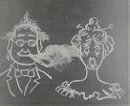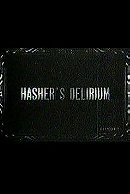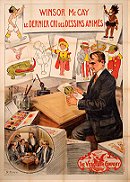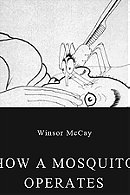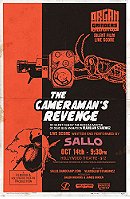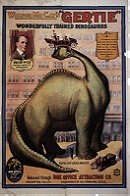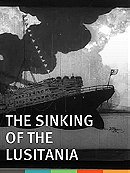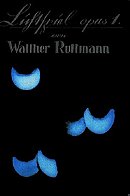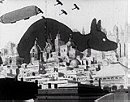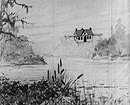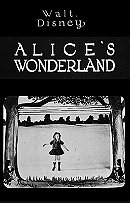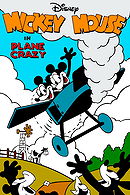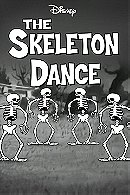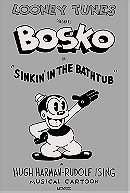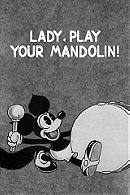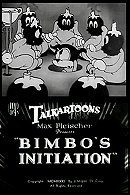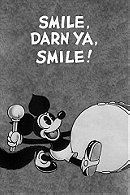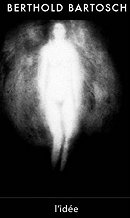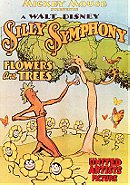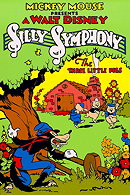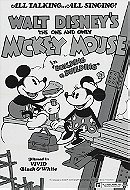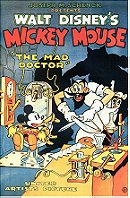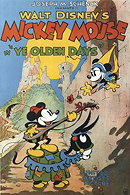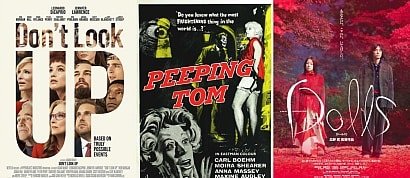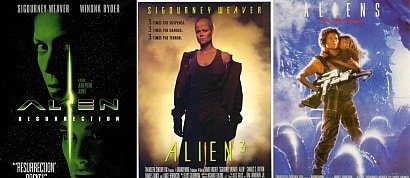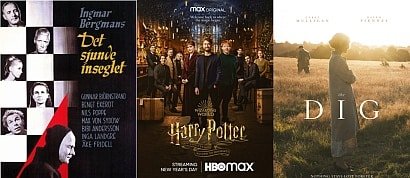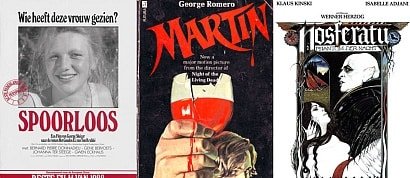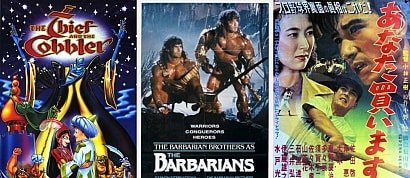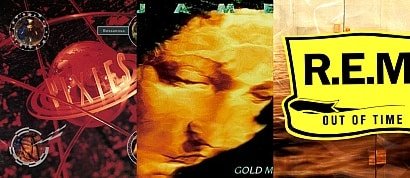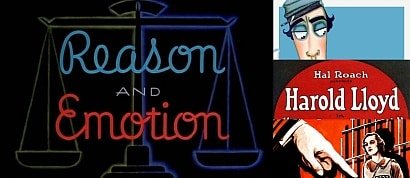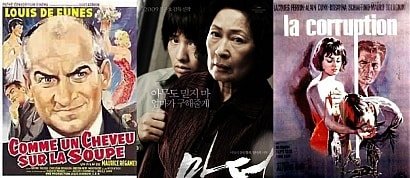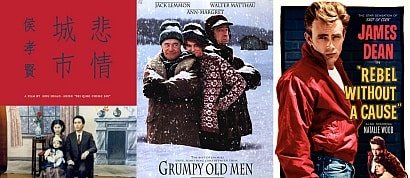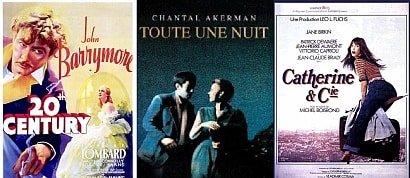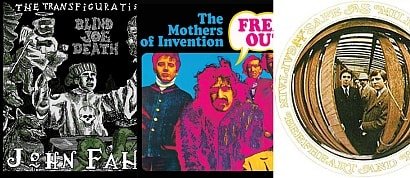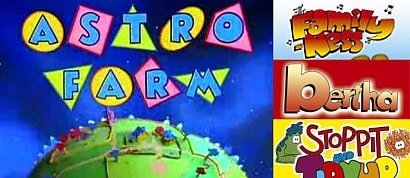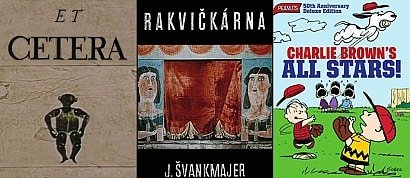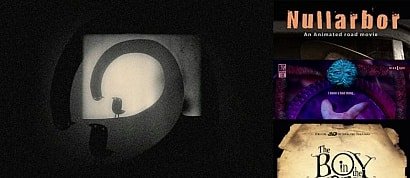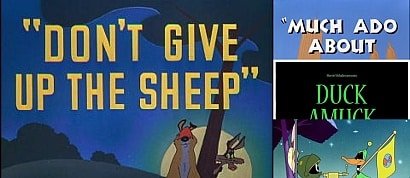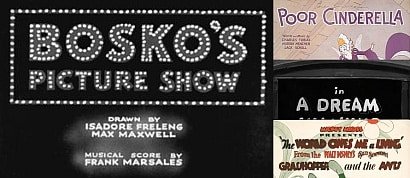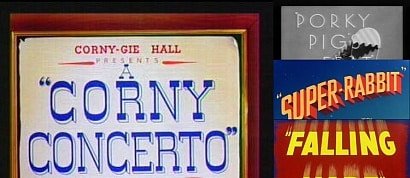1001 Animated Shorts You Must See - The Full List
Sort by:
Showing 1-50 of 1001
Decade:
Rating:
List Type:
DIR: Charles-Emile Reynaud
SUMMARY: Harlequin secretly comes to visit his lover Columbine one night but their meeting is interrupted by the arrival of Pierrot, whose moonlight serenade is cut short by Harlequin's trickery.
WHY IT'S HERE: There are many films that are held up as the first animated film ever made but Charles-Emile Reynaud's 'Pauvre Pierrot' (aka 'Poor Pierrot' or 'Poor Pete') is likely the film that genuinely holds the title. Reynaud was a perfectionist who hand-painted each of the 500 images that make up this charming, miraculous short, and projected them himself to a fascinated public. It is even more miraculous that 'Pauvre Pierrot' exists at all today, given that the frustrated and penniless Reynaud threw the majority of his work into the Seine when his creations were rendered obsolete by the Cinematograph. But 'Pauvre Pierrot', for all its simplicity, is a remarkable and charming film that will thrill any animation fan with a sense of history.
SUMMARY: Harlequin secretly comes to visit his lover Columbine one night but their meeting is interrupted by the arrival of Pierrot, whose moonlight serenade is cut short by Harlequin's trickery.
WHY IT'S HERE: There are many films that are held up as the first animated film ever made but Charles-Emile Reynaud's 'Pauvre Pierrot' (aka 'Poor Pierrot' or 'Poor Pete') is likely the film that genuinely holds the title. Reynaud was a perfectionist who hand-painted each of the 500 images that make up this charming, miraculous short, and projected them himself to a fascinated public. It is even more miraculous that 'Pauvre Pierrot' exists at all today, given that the frustrated and penniless Reynaud threw the majority of his work into the Seine when his creations were rendered obsolete by the Cinematograph. But 'Pauvre Pierrot', for all its simplicity, is a remarkable and charming film that will thrill any animation fan with a sense of history.
Autour d'une cabine (1894)
DIR: Charles-Emile Reynaud
SUMMARY: Two characters enjoy a day at the beach.
WHY IT'S HERE: 'Autour d'une Cabine' is another of Charles-Emile Reynaud's early examples of animation. If anything it has even less plot than 'Pauvre Pierrot' but is every bit as fascinating. Here, Reynaud plays with the saucy seaside imagery that is thought of as quintessentially British, as he depicts two characters enjoying the simple pleasures of a day at the beach. Any surviving work by Reynaud is worth celebrating and 'Autour d'une Cabine' retains its charm to this day, if it has doubtless lost a good deal of its novelty for modern audiences.
SUMMARY: Two characters enjoy a day at the beach.
WHY IT'S HERE: 'Autour d'une Cabine' is another of Charles-Emile Reynaud's early examples of animation. If anything it has even less plot than 'Pauvre Pierrot' but is every bit as fascinating. Here, Reynaud plays with the saucy seaside imagery that is thought of as quintessentially British, as he depicts two characters enjoying the simple pleasures of a day at the beach. Any surviving work by Reynaud is worth celebrating and 'Autour d'une Cabine' retains its charm to this day, if it has doubtless lost a good deal of its novelty for modern audiences.
DIR: J. Stuart Blackton
SUMMARY: A series of amusing characters are draw in chalk and subsequently come to life.
WHY IT'S HERE: J. Stuart Blackton secured his reputation as the father of American animation with this great early animated film which many consider the first example of the medium. Although this ignores the pioneering work of Reynaud, Blackthorn's work here undoubtedly improves upon Reynaud's wonderful but stiff creations. Blackton's line drawings, despite also being rather limited, are far more expressive and endowed with a greater humour and life. 'Humorous Phases of Funny Faces' is an expansion on Blackton's earlier, semi-animated film 'The Enchanted Drawing', but while that film essentially amounted to a parlour trick with only a couple of seconds of animation, 'Humorous Phases of Funny Faces' makes the drawings the whole show and earns itself a place in history in the process.
SUMMARY: A series of amusing characters are draw in chalk and subsequently come to life.
WHY IT'S HERE: J. Stuart Blackton secured his reputation as the father of American animation with this great early animated film which many consider the first example of the medium. Although this ignores the pioneering work of Reynaud, Blackthorn's work here undoubtedly improves upon Reynaud's wonderful but stiff creations. Blackton's line drawings, despite also being rather limited, are far more expressive and endowed with a greater humour and life. 'Humorous Phases of Funny Faces' is an expansion on Blackton's earlier, semi-animated film 'The Enchanted Drawing', but while that film essentially amounted to a parlour trick with only a couple of seconds of animation, 'Humorous Phases of Funny Faces' makes the drawings the whole show and earns itself a place in history in the process.
A Fantasy (1908)
DIR: Emile Cohl
SUMMARY: Chalk line stick figures of a gentleman and a clown encounter objects that morph and transform fluidly before them.
WHY IT'S HERE: Emile Cohl's 'Fantasmagorie' is another landmark of early animation. Taking inspiration from the work of J. Stuart Blackton, Cohl created a short animation in which chalk line drawings metamorphose fluidly into different shapes and characters. The Blackton influence is clear in the main characters of a clown and a gentleman and the white line drawings but Cohl's figures are looser and more surreal, opening up the possibilities for animation even further. Though it lasts 1 minute 20 seconds, that's 1 minute 20 seconds that changed animation history.
SUMMARY: Chalk line stick figures of a gentleman and a clown encounter objects that morph and transform fluidly before them.
WHY IT'S HERE: Emile Cohl's 'Fantasmagorie' is another landmark of early animation. Taking inspiration from the work of J. Stuart Blackton, Cohl created a short animation in which chalk line drawings metamorphose fluidly into different shapes and characters. The Blackton influence is clear in the main characters of a clown and a gentleman and the white line drawings but Cohl's figures are looser and more surreal, opening up the possibilities for animation even further. Though it lasts 1 minute 20 seconds, that's 1 minute 20 seconds that changed animation history.
DIR: Segundo de Chomon
SUMMARY: A couple check into a hotel where everything is controlled electrically.
WHY IT'S HERE: This Spanish short film is one of the earliest examples of this kind of blending of live action film and stop motion animation. A couple check into a hotel where everything is done electrically. This somehow means that their bags are able to unpack themselves and the razors and brushes shave and brush their hair and shoes unassisted. The effect may look primitive today but the objects still come to life convincingly and in a way that must have amused audiences greatly in 1908. The climax, in which the electrics go wrong and everything goes crazy, is an early example of the fear of encroaching technology that would permeate many subsequent 20th century texts.
SUMMARY: A couple check into a hotel where everything is controlled electrically.
WHY IT'S HERE: This Spanish short film is one of the earliest examples of this kind of blending of live action film and stop motion animation. A couple check into a hotel where everything is done electrically. This somehow means that their bags are able to unpack themselves and the razors and brushes shave and brush their hair and shoes unassisted. The effect may look primitive today but the objects still come to life convincingly and in a way that must have amused audiences greatly in 1908. The climax, in which the electrics go wrong and everything goes crazy, is an early example of the fear of encroaching technology that would permeate many subsequent 20th century texts.
The Mind of a Cafe Waiter (1910)
DIR: Emile Cohl
SUMMARY: A waiter deleriously watches images appear before him in a bubble.
WHY IT'S HERE: Emile Cohl's 'The Mind of a Cafe Waiter' (aka 'The Hasher's Delerium') shows his shapeshifting animations in develompment from the white line drawings of 'Fantasmagorie'. Here we witness nightmare images of demon faces appear interspersed with glimpses of alcoholic beverages and their names (including the then illegal absinthe). Seemingly either a warning against the consumption of too much alcohol or a satirical look into the mind of a drunk, 'The Mind of a Cafe Waiter' is another early oddity from Cohl which is well worth a look, although Winsor McCay was about to render this sort of primitive animation redundant.
SUMMARY: A waiter deleriously watches images appear before him in a bubble.
WHY IT'S HERE: Emile Cohl's 'The Mind of a Cafe Waiter' (aka 'The Hasher's Delerium') shows his shapeshifting animations in develompment from the white line drawings of 'Fantasmagorie'. Here we witness nightmare images of demon faces appear interspersed with glimpses of alcoholic beverages and their names (including the then illegal absinthe). Seemingly either a warning against the consumption of too much alcohol or a satirical look into the mind of a drunk, 'The Mind of a Cafe Waiter' is another early oddity from Cohl which is well worth a look, although Winsor McCay was about to render this sort of primitive animation redundant.
Little Nemo (1911)
DIR: Winsor McCay
SUMMARY: Newspaper cartoonist Winsor McCay bets his friends that he can produce 4000 drawings within a month, which he will present as the first ever animated film.
WHY IT'S HERE: Although he was not, as he often claimed, the inventor of the animated film, Winsor McCay is surely one of the most important names in animation history. While the likes of Reynaud, Blackton and Cohl beat him to it, what McCay did with the medium of animation was an enormous leap ahead, as evidenced in this, his first film.
McCay was already famous for his masterful newspaper comic strips, the most famous of which, 'Little Nemo in Slumberland', was the basis for this short. Of its 11 and a half minute runtime, only about two minutes are actually animated, the rest taken up with a live action framing device in which McCay bets his friends he can create 4000 drawings and turn them into a moving picture within a month. These sequences are a charming, exaggerated glimpse at the embryonic animation process but they are nothing compared with the genuinely magical moment when the drawings come to life. Compared with the moving figures that had been seen on screen before, McCay's Nemo characters were significantly more lifelike and McCay plays with perspective, colour and a greater depth of personality. 'Little Nemo' aka 'Winsor McCay, the Famous Cartoonist of the N.Y. Herald and His Moving Comics', more than justifies its self-aggrandizing alternative title as the debut work of one of animation's masters.
SUMMARY: Newspaper cartoonist Winsor McCay bets his friends that he can produce 4000 drawings within a month, which he will present as the first ever animated film.
WHY IT'S HERE: Although he was not, as he often claimed, the inventor of the animated film, Winsor McCay is surely one of the most important names in animation history. While the likes of Reynaud, Blackton and Cohl beat him to it, what McCay did with the medium of animation was an enormous leap ahead, as evidenced in this, his first film.
McCay was already famous for his masterful newspaper comic strips, the most famous of which, 'Little Nemo in Slumberland', was the basis for this short. Of its 11 and a half minute runtime, only about two minutes are actually animated, the rest taken up with a live action framing device in which McCay bets his friends he can create 4000 drawings and turn them into a moving picture within a month. These sequences are a charming, exaggerated glimpse at the embryonic animation process but they are nothing compared with the genuinely magical moment when the drawings come to life. Compared with the moving figures that had been seen on screen before, McCay's Nemo characters were significantly more lifelike and McCay plays with perspective, colour and a greater depth of personality. 'Little Nemo' aka 'Winsor McCay, the Famous Cartoonist of the N.Y. Herald and His Moving Comics', more than justifies its self-aggrandizing alternative title as the debut work of one of animation's masters.
DIR: Winsor McCay
SUMMARY: A large mosquito feeds persistently on a man as he tries to sleep.
WHY IT'S HERE: Winsor McCay's follow-up to the popular 'Little Nemo' was based on another of his comic strips, 'Dreams of the Rarebit Fiend', an inventive strip in which different characters experienced vivid nightmares as a result of eating before bedtime. 'How a Mosquito Operates' retains '...Rarebit Fiend's nightmarish imagery as a giant mosquito sucks the blood of a troubled man trying to sleep. The film is often praised for its realism as (although it wears a hat and carries a briefcase) the mosquito's body expands realistically as it fills with blood, its abdomen bulging rather than its body blowing up like a balloon. But even more noteworthy is McCay's development of character. He imbues the titular mosquito with traits such as a persistent single-mindedness and greed which, in a very primitive way, mark him out as perhaps animation's first true 'character'. While previous animations had given us only glimpses of smiling faces or stiff representations of types, McCay is here experimenting with something deeper. This primitive characterisation would be developed considerably in McCay's next film 'Gertie the Dinosaur', in which he created the first real 'star' of animation.
SUMMARY: A large mosquito feeds persistently on a man as he tries to sleep.
WHY IT'S HERE: Winsor McCay's follow-up to the popular 'Little Nemo' was based on another of his comic strips, 'Dreams of the Rarebit Fiend', an inventive strip in which different characters experienced vivid nightmares as a result of eating before bedtime. 'How a Mosquito Operates' retains '...Rarebit Fiend's nightmarish imagery as a giant mosquito sucks the blood of a troubled man trying to sleep. The film is often praised for its realism as (although it wears a hat and carries a briefcase) the mosquito's body expands realistically as it fills with blood, its abdomen bulging rather than its body blowing up like a balloon. But even more noteworthy is McCay's development of character. He imbues the titular mosquito with traits such as a persistent single-mindedness and greed which, in a very primitive way, mark him out as perhaps animation's first true 'character'. While previous animations had given us only glimpses of smiling faces or stiff representations of types, McCay is here experimenting with something deeper. This primitive characterisation would be developed considerably in McCay's next film 'Gertie the Dinosaur', in which he created the first real 'star' of animation.
The Cameraman's Revenge (1912)
DIR: Władysław Starewicz
SUMMARY: A married couple, both cheating on each other, fall victim to the voyeuristic activities of a jealous cameraman. The drama is played out by insects.
WHY IT'S HERE: Of the many insect films made by Russian animator Władysław Starewicz, 'The Cameraman's Revenge' is the most famous and critically acclaimed. It's distinctly adult story of adulterous spouses is given an absurdist edge by the fact that the husband and wife are beetles and the jealous cameraman who exposes them is a grasshopper. Starewicz's film can be a little hard to follow if you don't know the story in advance (although there are various versions with helpful title cards, as well as at least one that fudges the story completely and makes it about siblings, blunting the film's edge in the process). The insects can be hard to tell apart but they are beautifully animated in skin-crawlingly realistic fashion. The audience may laugh at the insects' antics but, ultimately it is human behaviour that is being lampooned with the insects as a surrogate.
SUMMARY: A married couple, both cheating on each other, fall victim to the voyeuristic activities of a jealous cameraman. The drama is played out by insects.
WHY IT'S HERE: Of the many insect films made by Russian animator Władysław Starewicz, 'The Cameraman's Revenge' is the most famous and critically acclaimed. It's distinctly adult story of adulterous spouses is given an absurdist edge by the fact that the husband and wife are beetles and the jealous cameraman who exposes them is a grasshopper. Starewicz's film can be a little hard to follow if you don't know the story in advance (although there are various versions with helpful title cards, as well as at least one that fudges the story completely and makes it about siblings, blunting the film's edge in the process). The insects can be hard to tell apart but they are beautifully animated in skin-crawlingly realistic fashion. The audience may laugh at the insects' antics but, ultimately it is human behaviour that is being lampooned with the insects as a surrogate.
Gertie the Dinosaur (1914)
DIR: Winsor McCay
SUMMARY: Winsor McCay presents Gertie, the only dinosaur in captivity. Disobedient, playful and childlike, Gertie became the first well-rounded personality in animation.
WHY IT'S HERE: 'Gertie the Dinosaur' remains one of the most famous animated shorts of all time. Often wrongly credited as being the first animated film, McCay's film does make a convincing claim to creating the first cartoon star. In her canine like capering and interplay with McCay's master of ceremonies, Gertie far surpasses all other attempts at characterisation that went before her. From Reynaud's stiff painted figures and Blackton's chalk outlines to Starewicz's spindly insects, no-one had quite mastered instilling recognisable traits into animated creations. McCay's mosquito from his previous short 'How a Mosquito Operates' came closest but Gertie takes things a step further. Here was a creation with whom audiences could identify and sympathise and it made her all the more entertaining.
McCay took his Gertie show on the road and it perhaps loses some of its impact when seen by modern audiences, as we are deprived of the experience of seeing the real-life McCay interact with his animated creation, tossing her a pumpkin or riding on her back. But 'Gertie the Dinosaur' remains one of the crown jewels of animation, paving the way for animated personalities. Gertie starred in only one more short, 'Gertie on Tour', the majority of which is now lost, but this debut performance alone cemented her place in animation history.
SUMMARY: Winsor McCay presents Gertie, the only dinosaur in captivity. Disobedient, playful and childlike, Gertie became the first well-rounded personality in animation.
WHY IT'S HERE: 'Gertie the Dinosaur' remains one of the most famous animated shorts of all time. Often wrongly credited as being the first animated film, McCay's film does make a convincing claim to creating the first cartoon star. In her canine like capering and interplay with McCay's master of ceremonies, Gertie far surpasses all other attempts at characterisation that went before her. From Reynaud's stiff painted figures and Blackton's chalk outlines to Starewicz's spindly insects, no-one had quite mastered instilling recognisable traits into animated creations. McCay's mosquito from his previous short 'How a Mosquito Operates' came closest but Gertie takes things a step further. Here was a creation with whom audiences could identify and sympathise and it made her all the more entertaining.
McCay took his Gertie show on the road and it perhaps loses some of its impact when seen by modern audiences, as we are deprived of the experience of seeing the real-life McCay interact with his animated creation, tossing her a pumpkin or riding on her back. But 'Gertie the Dinosaur' remains one of the crown jewels of animation, paving the way for animated personalities. Gertie starred in only one more short, 'Gertie on Tour', the majority of which is now lost, but this debut performance alone cemented her place in animation history.
DIR: Willis H. O'Brien
SUMMARY: Three cavemen vie for the affections of a cavewoman, while a vicious apeman known as Wild Willie searches for food.
WHY IT'S HERE: 'The Dinosaur and the Missing Link: A Prehistoric Tragedy' is a fun, unassuming little comedy adventure which is notable for being one of the earliest examples of Willis O'Brien's stop motion animation. A rare completely animated O'Brien film, this is not a patch on the amazing work he would go on to do on 'The Lost World' and, most famously, 'King Kong', but it has elements of both these animated masterpieces in embryonic form, including a very early take on the ape vs. dinosaur battle. The plot is silly and the animation comparatively crude by the standards of O'Brien's better known films but 'The Dinosaur and the Missing Link' is, nonetheless, a charming little curio.
SUMMARY: Three cavemen vie for the affections of a cavewoman, while a vicious apeman known as Wild Willie searches for food.
WHY IT'S HERE: 'The Dinosaur and the Missing Link: A Prehistoric Tragedy' is a fun, unassuming little comedy adventure which is notable for being one of the earliest examples of Willis O'Brien's stop motion animation. A rare completely animated O'Brien film, this is not a patch on the amazing work he would go on to do on 'The Lost World' and, most famously, 'King Kong', but it has elements of both these animated masterpieces in embryonic form, including a very early take on the ape vs. dinosaur battle. The plot is silly and the animation comparatively crude by the standards of O'Brien's better known films but 'The Dinosaur and the Missing Link' is, nonetheless, a charming little curio.
The Lily of Belgium (1915)
DIR: Władysław Starewicz
SUMMARY: An allegory for Belgium's part in the First World War, told through the story of an army of beetles and a lily.
WHY IT'S HERE: Władysław Starewicz's 'The Lily of Belgium' is a beautifully realised allegory about Belgium's part in WWI, released while it was still going on. Framed by live action sequences of an old man telling his granddaughter the story, Starewicz once again uses insects to tell his story, in this case an army of evil beetles who destroy the titular lily for their own ends. The beetle army is an amazing creation, memorably bulldozing their way through everything, both on foot and in tiny beetle vehicles. Starewicz's mastery of his insect characters is even more prominent and the result is a quite beautiful piece of work that contrasts sharply with the cynicism of 'The Cameraman's Revenge'.
SUMMARY: An allegory for Belgium's part in the First World War, told through the story of an army of beetles and a lily.
WHY IT'S HERE: Władysław Starewicz's 'The Lily of Belgium' is a beautifully realised allegory about Belgium's part in WWI, released while it was still going on. Framed by live action sequences of an old man telling his granddaughter the story, Starewicz once again uses insects to tell his story, in this case an army of evil beetles who destroy the titular lily for their own ends. The beetle army is an amazing creation, memorably bulldozing their way through everything, both on foot and in tiny beetle vehicles. Starewicz's mastery of his insect characters is even more prominent and the result is a quite beautiful piece of work that contrasts sharply with the cynicism of 'The Cameraman's Revenge'.
DIR: Winsor McCay
SUMMARY: An animated documentary on the 1915 sinking of the Lusitania by a German U-Boat, an act that killed 1,198 people.
WHY IT'S HERE: 'The Sinking of the Lusitania' was a pet project for Winsor McCay, markedly different from his previous work. A far cry from the comic lightness of 'Gertie the Dinosaur', 'The Sinking of the Lusitania' was the first animated documentary, a piece of propoganda that was nearly two years in the making. The result is a startling work, presenting the sinking of the ship in unprecedentedly realistic animation, interspersed with passionately propogandist intertitles that speak of how strongly McCay had been affected by the event.
At the time of the actual sinking of the Lusitania three years earlier, McCay was working for newspaperman William Randolph Hearst (famously the chief inspiration for Orson Welles' masterpiece 'Citizen Kane'). The event enraged McCay but Hearst wanted to play down war stories as he was opposed to America joining the hostilities. Forced to illustrate anti-war and anti-British cartoons in his day job, McCay self-financed this film in his spare time. Unfortunately, the result was not a commercial success. Although it may be McCay's most visually remarkable short, its tragic subject matter and heavy-handed propoganda did not have the same entertainment value as McCay's fantastical depictions of dinosaurs and mosquitos. Just three years later Hearst leaned on McCay to give up animation in favour of putting more time into his newspaper illustrations. McCay's films between 'The Sinking of the Lusitania' and this enforced retirement returned to more crowd-pleasing topics but never quite improved on the level of technical excellence present in this film.
SUMMARY: An animated documentary on the 1915 sinking of the Lusitania by a German U-Boat, an act that killed 1,198 people.
WHY IT'S HERE: 'The Sinking of the Lusitania' was a pet project for Winsor McCay, markedly different from his previous work. A far cry from the comic lightness of 'Gertie the Dinosaur', 'The Sinking of the Lusitania' was the first animated documentary, a piece of propoganda that was nearly two years in the making. The result is a startling work, presenting the sinking of the ship in unprecedentedly realistic animation, interspersed with passionately propogandist intertitles that speak of how strongly McCay had been affected by the event.
At the time of the actual sinking of the Lusitania three years earlier, McCay was working for newspaperman William Randolph Hearst (famously the chief inspiration for Orson Welles' masterpiece 'Citizen Kane'). The event enraged McCay but Hearst wanted to play down war stories as he was opposed to America joining the hostilities. Forced to illustrate anti-war and anti-British cartoons in his day job, McCay self-financed this film in his spare time. Unfortunately, the result was not a commercial success. Although it may be McCay's most visually remarkable short, its tragic subject matter and heavy-handed propoganda did not have the same entertainment value as McCay's fantastical depictions of dinosaurs and mosquitos. Just three years later Hearst leaned on McCay to give up animation in favour of putting more time into his newspaper illustrations. McCay's films between 'The Sinking of the Lusitania' and this enforced retirement returned to more crowd-pleasing topics but never quite improved on the level of technical excellence present in this film.
Invisible Ink (1921)
DIR: Dave Fleischer
SUMMARY: Cartoonist Max Fleischer starts a battle with Koko the Clown, the animated trickster who emerges from his inkwell.
WHY IT'S HERE: The Fleischer brothers contribution to animation is too often overlooked in favour of Disney and Warner Bros. and I've always thought that their brilliant 'Out of the Inkwell' series was massively underappreciated. Mixing live-action and animation, the 'Out of the Inkwell' cartoons star Koko the Clown (who I always thought was one of the Fleischers' coolest creations), a cartoon who comes to life on his cartoonist's drawing board. The live action cartoonist, played by Max Fleischer himself, then interacts with Koko, in a precursor to such animator-vs-creation shorts as 'Duck Amuck' or Daniel Greaves' 'Manipulation'. The mix of live action and animation still looks fantastic today. 'Invisible Ink's chase through the city, which has Koko peeping out from behind buildings in a mocking fashion, is a great sequence which really opens the cartoon world out. The 'Out of the Inkwell' series was originally an experiment to showcase the Fleischers' new animation invention, Rotoscoping. This process of tracing real life movements to create realistic motion (clearly visible in Koko) would eventually become one of my least favourite animation techniques but the Fleischers used it brilliantly, first to bring together the real and cartoon worlds with seamless flair and later, in their first feature 'Gulliver's Travels', to differentiate between the exaggeratedly cartoony and the realisitically human within a completely animated world.
SUMMARY: Cartoonist Max Fleischer starts a battle with Koko the Clown, the animated trickster who emerges from his inkwell.
WHY IT'S HERE: The Fleischer brothers contribution to animation is too often overlooked in favour of Disney and Warner Bros. and I've always thought that their brilliant 'Out of the Inkwell' series was massively underappreciated. Mixing live-action and animation, the 'Out of the Inkwell' cartoons star Koko the Clown (who I always thought was one of the Fleischers' coolest creations), a cartoon who comes to life on his cartoonist's drawing board. The live action cartoonist, played by Max Fleischer himself, then interacts with Koko, in a precursor to such animator-vs-creation shorts as 'Duck Amuck' or Daniel Greaves' 'Manipulation'. The mix of live action and animation still looks fantastic today. 'Invisible Ink's chase through the city, which has Koko peeping out from behind buildings in a mocking fashion, is a great sequence which really opens the cartoon world out. The 'Out of the Inkwell' series was originally an experiment to showcase the Fleischers' new animation invention, Rotoscoping. This process of tracing real life movements to create realistic motion (clearly visible in Koko) would eventually become one of my least favourite animation techniques but the Fleischers used it brilliantly, first to bring together the real and cartoon worlds with seamless flair and later, in their first feature 'Gulliver's Travels', to differentiate between the exaggeratedly cartoony and the realisitically human within a completely animated world.
Lichtspiel Opus 1. (1921)
DIR: Walter Ruttmann
SUMMARY: Abstract shapes undulate to the sound of Max Butting's 'Opus I'.
WHY IT'S HERE: With 'Opus I' Walter Ruttmann pioneered the abstract animated short. A painter who became frustrated with what he saw as the inherently static nature of the medium, Ruttmann seized upon animation as a chance to further his art. 'Opus I' works beautifully, Ruttmann's shapes painted with oil on glass plates, which Ruttmann shot a frame of after each brush stroke. This melding of the avant garde with music was a hugely influential piece, perhaps most famously on Disney's 'Fantasia', which not only based its whole two hours around animation set to music but even included its own abstract segment, the opening 'Toccata and Fugue in D Minor'.
SUMMARY: Abstract shapes undulate to the sound of Max Butting's 'Opus I'.
WHY IT'S HERE: With 'Opus I' Walter Ruttmann pioneered the abstract animated short. A painter who became frustrated with what he saw as the inherently static nature of the medium, Ruttmann seized upon animation as a chance to further his art. 'Opus I' works beautifully, Ruttmann's shapes painted with oil on glass plates, which Ruttmann shot a frame of after each brush stroke. This melding of the avant garde with music was a hugely influential piece, perhaps most famously on Disney's 'Fantasia', which not only based its whole two hours around animation set to music but even included its own abstract segment, the opening 'Toccata and Fugue in D Minor'.
DIR: Winsor McCay
SUMMARY: A tramp falls asleep after eating a cheesecake and dreams of a bizarre variety show performed entirely by insects and arachnids.
WHY IT'S HERE: After his ambitious work on pet project 'The Sinking of the Lusitania', Winnsor McCay returned in 1921 to the simple charms of his comics strip creations with a series of 'Dreams of the Rarebit Fiend' shorts. 'Bug Vaudeville' presents us with a revue in which the performers are all insects or arachnids. This premise is played out for the full ten minutes, with one bug act following another as the curtain rises and falls. When watching 'Bug Vaudeville' I often wonder if McCay took inspiration from Starewicz's spindly insect characters. While some have found the film's ten minutes repetitive and hard to sit through, any fan of animation will no doubt be fascinated and impressed with McCay's wonderful bug animation and the unforgettably creepy finale.
SUMMARY: A tramp falls asleep after eating a cheesecake and dreams of a bizarre variety show performed entirely by insects and arachnids.
WHY IT'S HERE: After his ambitious work on pet project 'The Sinking of the Lusitania', Winnsor McCay returned in 1921 to the simple charms of his comics strip creations with a series of 'Dreams of the Rarebit Fiend' shorts. 'Bug Vaudeville' presents us with a revue in which the performers are all insects or arachnids. This premise is played out for the full ten minutes, with one bug act following another as the curtain rises and falls. When watching 'Bug Vaudeville' I often wonder if McCay took inspiration from Starewicz's spindly insect characters. While some have found the film's ten minutes repetitive and hard to sit through, any fan of animation will no doubt be fascinated and impressed with McCay's wonderful bug animation and the unforgettably creepy finale.
DIR: Winsor McCay
SUMMARY: A man dreams his wife has adopted a strange new pet that grows bigger every time it is fed.
WHY IT'S HERE: McCay's second Rarebit film of 1921, 'The Pet' is probably the least engaging of the three. Telling the story of a creature that grows from cute little animal to a city-crushing leviathan, 'The Pet' sometimes moves at too slow a pace for its own good (watch that first excrutiating limp towards the door by the titular pet at the beginning of the film). However, as the film goes on and the pet grows to an enormous size it becomes more interesting, finally playing like a precursor to 'King Kong' as planes swarm around the giant creature. McCay makes 'The Pet' more disconcerting by never turning the creature into a snarling beast but keeping it as an indeterminate, unassuming but destructive curiosity.
SUMMARY: A man dreams his wife has adopted a strange new pet that grows bigger every time it is fed.
WHY IT'S HERE: McCay's second Rarebit film of 1921, 'The Pet' is probably the least engaging of the three. Telling the story of a creature that grows from cute little animal to a city-crushing leviathan, 'The Pet' sometimes moves at too slow a pace for its own good (watch that first excrutiating limp towards the door by the titular pet at the beginning of the film). However, as the film goes on and the pet grows to an enormous size it becomes more interesting, finally playing like a precursor to 'King Kong' as planes swarm around the giant creature. McCay makes 'The Pet' more disconcerting by never turning the creature into a snarling beast but keeping it as an indeterminate, unassuming but destructive curiosity.
DIR: Winsor McCay
SUMMARY: To avoid being evicted, a man fits a large propellor to his house and flies the whole thing away.
WHY IT'S HERE: The final of the later Rarebit shorts, which McCay co-credits to his son Robert, is my favourite of the three. The dream this time is a fantastical adventure, only turning nightmarish at the very end. Modern day viewers will doubtless think of Pete Docter's 'Up' when they see the flying house and it's hard to imagine this wasn't an influence on that Pixar feature. It takes a darker turn towards the end though, when the house floats off into space. There is a virtuoso piece of animation here but it is undermined by a distractingly hubristic title card that announces its brilliance and takes the viewer out of the film by acknowledging that they are watching an animation. This misjudgement aside, 'The Flying House' is a wonderfully imaginative piece and the last great surviving work of the masterful Winsor McCay.
SUMMARY: To avoid being evicted, a man fits a large propellor to his house and flies the whole thing away.
WHY IT'S HERE: The final of the later Rarebit shorts, which McCay co-credits to his son Robert, is my favourite of the three. The dream this time is a fantastical adventure, only turning nightmarish at the very end. Modern day viewers will doubtless think of Pete Docter's 'Up' when they see the flying house and it's hard to imagine this wasn't an influence on that Pixar feature. It takes a darker turn towards the end though, when the house floats off into space. There is a virtuoso piece of animation here but it is undermined by a distractingly hubristic title card that announces its brilliance and takes the viewer out of the film by acknowledging that they are watching an animation. This misjudgement aside, 'The Flying House' is a wonderfully imaginative piece and the last great surviving work of the masterful Winsor McCay.
The Frogs Who Wanted a King (1922)
DIR: Ladislas Starevich
SUMMARY: A group of ungrateful frogs implore the God Jupiter to send them a king but, unhappy with the result, they complain to their God and receive more than they bargained for in return.
WHY IT'S HERE: Based on an Aesop fable, 'The Frogs Who Wanted a King' was Władysław Starewicz's first film after he fled Russia for Paris during WWI. Changing his name to Ladislas Starevich for easier pronunciation in French, he set about making his first film. In contrast with the spindly insect characters of his earlier work, 'The Frogs Who Wanted a King' stars an impressive group of frog puppets and a wonderful puppet God who would rather sleep than get involved with his creations. Starevich turned the fable into a political allegory in favour of his libertarian politics and with a sharp sting in the tail that even the dire frog puns of the English translation can't spoil. A fantastic film that shows Starevich's progression as a great animator whose importance to early puppet animation cannot be underestimated.
SUMMARY: A group of ungrateful frogs implore the God Jupiter to send them a king but, unhappy with the result, they complain to their God and receive more than they bargained for in return.
WHY IT'S HERE: Based on an Aesop fable, 'The Frogs Who Wanted a King' was Władysław Starewicz's first film after he fled Russia for Paris during WWI. Changing his name to Ladislas Starevich for easier pronunciation in French, he set about making his first film. In contrast with the spindly insect characters of his earlier work, 'The Frogs Who Wanted a King' stars an impressive group of frog puppets and a wonderful puppet God who would rather sleep than get involved with his creations. Starevich turned the fable into a political allegory in favour of his libertarian politics and with a sharp sting in the tail that even the dire frog puns of the English translation can't spoil. A fantastic film that shows Starevich's progression as a great animator whose importance to early puppet animation cannot be underestimated.
Cinderella (1922)
DIR: Lotte Reiniger
SUMMARY: The story of Cinderella presented by shadow puppets.
WHY IT'S HERE: German silhouettte animator Lotte Reiniger is best known for the brilliant 'The Adventures of Prince Achmed', the oldest surviving animated feature film in existence. But she is also well known for the fairy tale films she made in the 50s. While those films are charming enough, they pale in comparison to one of Reiniger's earliest fairy tale films, 'Cinderella', in which Reiniger presents us with a faithful but stylistically daring take on the story. Unlike the fairly pedestrian version of the tale she made in the 50s, Reiniger's 20s 'Cinderella' is completely silent and is marked out by the presence of a large pair of scissors. The scissors cut out the lead character and then place her in the story, essentially making the animator as much part of the story as her characters. Both Reiniger's presence and technique are prominent, with many of the scenes taking place inside snipped-out jagged windows. The intertitles also regularly feature the word 'Snip' before each line, persistently reminding us of Reiniger slaving away over her creations.
Aside from its stylistic triumphs, Reiniger's film is well told with brilliantly expressive characters who transcend their 2D blackness to become the heroes and grotesques we all recognise from fairy tales. Reiniger continues to be the most recognisable and admired name in silhouette animation, influencing such latter day animators as Michel Ocelot and Andrey Shushkov.
SUMMARY: The story of Cinderella presented by shadow puppets.
WHY IT'S HERE: German silhouettte animator Lotte Reiniger is best known for the brilliant 'The Adventures of Prince Achmed', the oldest surviving animated feature film in existence. But she is also well known for the fairy tale films she made in the 50s. While those films are charming enough, they pale in comparison to one of Reiniger's earliest fairy tale films, 'Cinderella', in which Reiniger presents us with a faithful but stylistically daring take on the story. Unlike the fairly pedestrian version of the tale she made in the 50s, Reiniger's 20s 'Cinderella' is completely silent and is marked out by the presence of a large pair of scissors. The scissors cut out the lead character and then place her in the story, essentially making the animator as much part of the story as her characters. Both Reiniger's presence and technique are prominent, with many of the scenes taking place inside snipped-out jagged windows. The intertitles also regularly feature the word 'Snip' before each line, persistently reminding us of Reiniger slaving away over her creations.
Aside from its stylistic triumphs, Reiniger's film is well told with brilliantly expressive characters who transcend their 2D blackness to become the heroes and grotesques we all recognise from fairy tales. Reiniger continues to be the most recognisable and admired name in silhouette animation, influencing such latter day animators as Michel Ocelot and Andrey Shushkov.
The Original Movie. (1922)
DIR: Tony Sarg
SUMMARY: A look at the earliest example of movie making by the Stonehenge Film Company.
WHY IT'S HERE: The majority of German-American puppeteer and illustrator Tony Sarg's animation work is now considered lost. The few films that survive are notable works that nevertheless feel a tad confused in their narratives. By far the best is 'The Original Movie', an occasionally baffling but often amusing rewriting of film history which depicts the first ever film created by the Stonehenge Film Company, a rag-tag group of oddballs and a goat. Although this satire on the film industry, in particular its treatment of writers, is a little jumbled it's still remarkable to see such a satire so early in the development of film as a medium. Sarg's silhouette puppets are amusing but far less expressive than Lotte Reiniger's work in the same style but his final sequence in which the film's screenwriter is shown the finished film of his script provides a memorable sting in the tail.
SUMMARY: A look at the earliest example of movie making by the Stonehenge Film Company.
WHY IT'S HERE: The majority of German-American puppeteer and illustrator Tony Sarg's animation work is now considered lost. The few films that survive are notable works that nevertheless feel a tad confused in their narratives. By far the best is 'The Original Movie', an occasionally baffling but often amusing rewriting of film history which depicts the first ever film created by the Stonehenge Film Company, a rag-tag group of oddballs and a goat. Although this satire on the film industry, in particular its treatment of writers, is a little jumbled it's still remarkable to see such a satire so early in the development of film as a medium. Sarg's silhouette puppets are amusing but far less expressive than Lotte Reiniger's work in the same style but his final sequence in which the film's screenwriter is shown the finished film of his script provides a memorable sting in the tail.
Felix in Hollywood (1923)
DIR: Otto Messmer
SUMMARY: Felix the Cat travels to Hollywood to try and make his fortune in the movies.
WHY IT'S HERE: The majority of Otto Messmer and Pat Sullivan's early Felix the Cat films now seem like relics of their time. Although Felix was the first mass-merchandised cartoon star, I've never found him all that appealing in terms of visuals or character. That said, there was at least one very memorable episode in the series in the shape of 'Felix in Hollywood. Although a good chunk of the film is taken up with an unnecessary preamble about raising the money to get to Hollywood, once Felix arrives there the film becomes a fascinating document of the movie business of the early 20s and a pioneering example of the Hollywood caricature film that became popular as movies got bigger and more glamorous. For all but the most dedicated cineastes, few of these caricatures will be recognisable. There's the iconic Chaplin of course, and Douglas Fairbanks but less people will recognise the likes of William S. Hart, Snub Pollard or Ben Turpin (which is a shame because the Turpin gag is the best in the whole cartoon). But this makes 'Felix in Hollywood' all the more fun for the handful of film lovers who do get all the references.
SUMMARY: Felix the Cat travels to Hollywood to try and make his fortune in the movies.
WHY IT'S HERE: The majority of Otto Messmer and Pat Sullivan's early Felix the Cat films now seem like relics of their time. Although Felix was the first mass-merchandised cartoon star, I've never found him all that appealing in terms of visuals or character. That said, there was at least one very memorable episode in the series in the shape of 'Felix in Hollywood. Although a good chunk of the film is taken up with an unnecessary preamble about raising the money to get to Hollywood, once Felix arrives there the film becomes a fascinating document of the movie business of the early 20s and a pioneering example of the Hollywood caricature film that became popular as movies got bigger and more glamorous. For all but the most dedicated cineastes, few of these caricatures will be recognisable. There's the iconic Chaplin of course, and Douglas Fairbanks but less people will recognise the likes of William S. Hart, Snub Pollard or Ben Turpin (which is a shame because the Turpin gag is the best in the whole cartoon). But this makes 'Felix in Hollywood' all the more fun for the handful of film lovers who do get all the references.
Rhythmus 21 (1921)
DIR: Hans Richter
SUMMARY: An abstract film in which black, white and grey squares and rectangles pulsate rhythmically, creating illusion of perspective.
WHY IT'S HERE: Hans Richter, like Winsor McCay, liked to make grandiose claims about the pioneering nature of his films that history simply doesn't back up. In the case of Rhythmus 21, Richter often referred to it as the first abstract film ever made. Not only was this not the case, 'Rhythmus 21' was not even the first abstract animation, being beaten by Walter Ruttmann's 'Opus I' in 1921 (Richter's naming of his film seems to be an attempt to backdate it in order to trump Ruttmann's efforts). Whatever the case may be however, 'Rhythmus 21' is an important film in the early development of animated abstraction and it couldn't be more different from Ruttmann's work. In 'Opus 21' the shapes were colourful and playfully loose and free. 'Rhythmus 21' features rigid geometric shapes throbbing, growing and shrinking in size, giving the impression that perspectives are shifting with a rhytmically hypnotic effect.
SUMMARY: An abstract film in which black, white and grey squares and rectangles pulsate rhythmically, creating illusion of perspective.
WHY IT'S HERE: Hans Richter, like Winsor McCay, liked to make grandiose claims about the pioneering nature of his films that history simply doesn't back up. In the case of Rhythmus 21, Richter often referred to it as the first abstract film ever made. Not only was this not the case, 'Rhythmus 21' was not even the first abstract animation, being beaten by Walter Ruttmann's 'Opus I' in 1921 (Richter's naming of his film seems to be an attempt to backdate it in order to trump Ruttmann's efforts). Whatever the case may be however, 'Rhythmus 21' is an important film in the early development of animated abstraction and it couldn't be more different from Ruttmann's work. In 'Opus 21' the shapes were colourful and playfully loose and free. 'Rhythmus 21' features rigid geometric shapes throbbing, growing and shrinking in size, giving the impression that perspectives are shifting with a rhytmically hypnotic effect.
Alice's Wonderland (1923)
DIR: Walt Disney
SUMMARY: Young Alice visits a cartoon studio to see how cartoons are made. That night she dreams that she is in a cartoon world.
WHY IT'S HERE: Our first Walt Disney film on the list is very much here because of its historical importance rather than its actual content. That's not to say Disney's early Alice comedies were bad. Taking his cue from the Fleischer's Out of the Inkwell shorts, in which the animated Koko entered a live action world, Disney decided to produce a series of shorts that flipped the premise, placing a live action little girl into a cartoon universe. The effect is not a patch on the Fleischer brothers' exceptional work from this period but, despite the crude animation and thin if-existant-at-all plots, the Alice comedies speak of both Disney's dedication to innovation and his passionate work ethic. Walt Disney directed, produced and animated the 57 Alice comedies himself, in times when he was not financially stable enough to employ a team. 'Alice's Wonderland', the pilot film of the series, gives some idea of what to expect and, while it's no masterpiece, it's a must see for animation afficiandos to witness the humble beginnings of perhaps the most famous name in animation history, and to see just how far he came in so short a space of time.
SUMMARY: Young Alice visits a cartoon studio to see how cartoons are made. That night she dreams that she is in a cartoon world.
WHY IT'S HERE: Our first Walt Disney film on the list is very much here because of its historical importance rather than its actual content. That's not to say Disney's early Alice comedies were bad. Taking his cue from the Fleischer's Out of the Inkwell shorts, in which the animated Koko entered a live action world, Disney decided to produce a series of shorts that flipped the premise, placing a live action little girl into a cartoon universe. The effect is not a patch on the Fleischer brothers' exceptional work from this period but, despite the crude animation and thin if-existant-at-all plots, the Alice comedies speak of both Disney's dedication to innovation and his passionate work ethic. Walt Disney directed, produced and animated the 57 Alice comedies himself, in times when he was not financially stable enough to employ a team. 'Alice's Wonderland', the pilot film of the series, gives some idea of what to expect and, while it's no masterpiece, it's a must see for animation afficiandos to witness the humble beginnings of perhaps the most famous name in animation history, and to see just how far he came in so short a space of time.
Symphonie diaganale (1924)
DIR: Viking Eggeling
SUMMARY: An experiment in design, time and rhythmn in which figures sprout lines and curves by accretions, building up a rhythmic, playful atmosphere.
WHY IT'S HERE: Viking Eggeling, like Walter Ruttmann and Han Richter before him, was an artist who saw animation as an opportunity to explore exciting new possibilities in art. 'Symphonie Diaganale', his playful, repetitive abtract animation, is now seen as one of the seminal works of the medium. Watching it as part of a trilogy with Ruttmann's 'Opus I' and Richter's 'Rhythmus 21', it becomes clear how short-sighted it is to write these films off as pretentious nonsense. Each of the films explores rhythm, space and perspective in different ways, showing a fascinating progression in abstract animation. The gradual builds and collapses of 'Symphonie Diaganale' could not be more different from the loose, fluidity of 'Opus I' or the pulsating rigidity of 'Rhythmus 21'. At over 8 minutes 'Symphonie Diaganale' may be the hardest to stick with but allow the visual rhythms to draw you in and it's a fascinating watch.
SUMMARY: An experiment in design, time and rhythmn in which figures sprout lines and curves by accretions, building up a rhythmic, playful atmosphere.
WHY IT'S HERE: Viking Eggeling, like Walter Ruttmann and Han Richter before him, was an artist who saw animation as an opportunity to explore exciting new possibilities in art. 'Symphonie Diaganale', his playful, repetitive abtract animation, is now seen as one of the seminal works of the medium. Watching it as part of a trilogy with Ruttmann's 'Opus I' and Richter's 'Rhythmus 21', it becomes clear how short-sighted it is to write these films off as pretentious nonsense. Each of the films explores rhythm, space and perspective in different ways, showing a fascinating progression in abstract animation. The gradual builds and collapses of 'Symphonie Diaganale' could not be more different from the loose, fluidity of 'Opus I' or the pulsating rigidity of 'Rhythmus 21'. At over 8 minutes 'Symphonie Diaganale' may be the hardest to stick with but allow the visual rhythms to draw you in and it's a fascinating watch.
DIR: Ladislas Starevich
SUMMARY: A nightgale is trapped and kept as a plaything by a young girl. While imprisoned, he sings to the sleeping girl, causing her to have dreams about the kingdom of birds, insects and fairies.
WHY IT'S HERE: 'Voice of the Nightingale' is perhaps Ladislas Starevich's most accessible film. In contrast with the cynically political 'The Frogs Who Wanted a King', 'Voice of the Nightingale' is a sweet natured fable with a touch of Kipling about it. Combining live action with naturalistic bird animation, Starevich tells his story beautifully, switching between the real world and a dream world populated by fairies, insects and threateningly large arachnids. The fairy tale purity of the whole film is enhanced by Starevich's hand-tinting of the film, which gives it a faded storybook colour befitting of its style.
SUMMARY: A nightgale is trapped and kept as a plaything by a young girl. While imprisoned, he sings to the sleeping girl, causing her to have dreams about the kingdom of birds, insects and fairies.
WHY IT'S HERE: 'Voice of the Nightingale' is perhaps Ladislas Starevich's most accessible film. In contrast with the cynically political 'The Frogs Who Wanted a King', 'Voice of the Nightingale' is a sweet natured fable with a touch of Kipling about it. Combining live action with naturalistic bird animation, Starevich tells his story beautifully, switching between the real world and a dream world populated by fairies, insects and threateningly large arachnids. The fairy tale purity of the whole film is enhanced by Starevich's hand-tinting of the film, which gives it a faded storybook colour befitting of its style.
DIR: Dave Fleischer
SUMMARY: Koko and his dog Fitz stumble upon the control centre of the earth and end up bringing about the apocalypse.
WHY IT'S HERE: This superbly surreal and imaginative cartoon is yet further proof of how undervalued the Out of the Inkwell series is. In the year that Mickey Mouse debuted and made cinema history, the brilliant Koko shorts somehow got swept under the rug, with Koko gradually being reduced to Betty Boop's sidekick and a footnote in animation history. 'Ko-Ko's Earth Control' also stars an early incarnation of the Fleischer's dog character Bimbo, at this stage called Fitz and designed slightly differently.
The plot of 'Ko-Ko's Earth Control' is simple but brilliant. The end of the world is brought about when Fitz pulls a lever that clearly states it will cause the apocalypse. The rest of the cartoon sees Koko and Fitz helplessly flailing around as the world ends around them. This includes moments of virtuoso surrealist animation that predates Bob Clampett's classic 'Porky in Wackyland' by a decade. There's also a hint of Daffy Duck's early personality in Fitz's disturbing wilful destruction, 9 years before the duck's debut, and the final live action scenes of Koko and Fitz stumbling around the animator's drawing board and office as their world crumbles around them makes me think of the ending of Don Hertzfeld's 'Rejected' some 72 years later. Not bad for a cartoon that has been largely and bewilderingly forgotten.
SUMMARY: Koko and his dog Fitz stumble upon the control centre of the earth and end up bringing about the apocalypse.
WHY IT'S HERE: This superbly surreal and imaginative cartoon is yet further proof of how undervalued the Out of the Inkwell series is. In the year that Mickey Mouse debuted and made cinema history, the brilliant Koko shorts somehow got swept under the rug, with Koko gradually being reduced to Betty Boop's sidekick and a footnote in animation history. 'Ko-Ko's Earth Control' also stars an early incarnation of the Fleischer's dog character Bimbo, at this stage called Fitz and designed slightly differently.
The plot of 'Ko-Ko's Earth Control' is simple but brilliant. The end of the world is brought about when Fitz pulls a lever that clearly states it will cause the apocalypse. The rest of the cartoon sees Koko and Fitz helplessly flailing around as the world ends around them. This includes moments of virtuoso surrealist animation that predates Bob Clampett's classic 'Porky in Wackyland' by a decade. There's also a hint of Daffy Duck's early personality in Fitz's disturbing wilful destruction, 9 years before the duck's debut, and the final live action scenes of Koko and Fitz stumbling around the animator's drawing board and office as their world crumbles around them makes me think of the ending of Don Hertzfeld's 'Rejected' some 72 years later. Not bad for a cartoon that has been largely and bewilderingly forgotten.
Plane Crazy (1928) (1929)
DIR: Walt Disney, Ub Iwerks
SUMMARY: Mickey Mouse is inspired by an article on Charles Lindbergh to build his own plane and take to the skies.
WHY IT'S HERE: We animation lovers are an annoyingly contradictory bunch. Show us someone who claims 'Gertie the Dinosaur' is the first animated film and we'll holler about Reynaud, Blackton and Cohl. Claim that 'Snow White and the Seven Dwarfs' was the first animated feature and we'll bellow about Quirino Cristiani's 'El Apostol'. And talk about Mickey Mouse's first appearance in 'Steamboat Willie' and we'll bring up 'Plane Crazy'.
Unlike with the other issues, there is still room for debate in the ongoing argument about Mickey Mouse's first appearance. Although 'Plane Crazy' was indeed the first cartoon made with the character, 'Steamboat Willie' was the first Mickey film given an actual release and therefore the public's proper introduction to the animated short's first real superstar. 'Plane Crazy' then got a proper release a few films down the line, although by that time sound had been added to what was originally a silent short.
'Plane Crazy' is not just an important film historically though, it is also remarkably entertaining. Fast paced, funny and with some cracking point-of-view shots from Mickey's out of control plane, it moves at a great lick and trumps 'Steamboat Willie' in terms of plot. Mickey, however, is just barely recognisable as himself here. Rascally, roguish, reckless and sexually agressive, he's not the affable everymouse that would come to be such an icon. His design is also noticably different from classic Mickey, an iconic image than immediately crystalised in 'Steamboat Willie'. In 'Plane Crazy' Mickey is far more like an actual mouse; a scruffy, spindly little thing. His trademark pants are in place but his beautiful dark eyes are not. For the last time until 'Fantasia' in 1940, Mickey has pupils. Although 'Plane Crazy' is officially a Mickey Mouse short, then, it feels like a trial run before the character immediately came together to take his place in history with 'Steamboat Willie'. Nevertheless, it's an entertaining and historically vital trial run.
SUMMARY: Mickey Mouse is inspired by an article on Charles Lindbergh to build his own plane and take to the skies.
WHY IT'S HERE: We animation lovers are an annoyingly contradictory bunch. Show us someone who claims 'Gertie the Dinosaur' is the first animated film and we'll holler about Reynaud, Blackton and Cohl. Claim that 'Snow White and the Seven Dwarfs' was the first animated feature and we'll bellow about Quirino Cristiani's 'El Apostol'. And talk about Mickey Mouse's first appearance in 'Steamboat Willie' and we'll bring up 'Plane Crazy'.
Unlike with the other issues, there is still room for debate in the ongoing argument about Mickey Mouse's first appearance. Although 'Plane Crazy' was indeed the first cartoon made with the character, 'Steamboat Willie' was the first Mickey film given an actual release and therefore the public's proper introduction to the animated short's first real superstar. 'Plane Crazy' then got a proper release a few films down the line, although by that time sound had been added to what was originally a silent short.
'Plane Crazy' is not just an important film historically though, it is also remarkably entertaining. Fast paced, funny and with some cracking point-of-view shots from Mickey's out of control plane, it moves at a great lick and trumps 'Steamboat Willie' in terms of plot. Mickey, however, is just barely recognisable as himself here. Rascally, roguish, reckless and sexually agressive, he's not the affable everymouse that would come to be such an icon. His design is also noticably different from classic Mickey, an iconic image than immediately crystalised in 'Steamboat Willie'. In 'Plane Crazy' Mickey is far more like an actual mouse; a scruffy, spindly little thing. His trademark pants are in place but his beautiful dark eyes are not. For the last time until 'Fantasia' in 1940, Mickey has pupils. Although 'Plane Crazy' is officially a Mickey Mouse short, then, it feels like a trial run before the character immediately came together to take his place in history with 'Steamboat Willie'. Nevertheless, it's an entertaining and historically vital trial run.
Steamboat Willie (1928)
DIR: Walt Disney, Ub Iwerks
SUMMARY: Mickey Mouse makes his official cartoon debut with audiences as a lackey aboard a steamboat captained by the brutish Pete.
WHY IT'S HERE: The third Mickey Mouse cartoon produced but the character's official debut, 'Steamboat Willie' is one of the most famous cartoons of all time. The film's opening images of Mickey at the helm of the steamboat, spinning the wheel and happily whistling to himself, have become some of the most iconic in animation. Rightly so, for two reasons. For one (despite the scraggly Mickey of 'Plane Crazy' appearing on the film's title card') this is instantly the Mickey Mouse we all know and love. More filled-out and handsome, complete with his completely black eyes and his pants with the huge buttons, this is Mickey at his handsomest, the classic design of the character. In personality too, this is the real Mickey. Carefree, happy-go-lucky, good-natured Mickey Mouse.
These are perhaps the reasons why 'Steamboat Willie' plays so well with animation fans today but there was another element that made it instantly popular with 1928 audiences; the whistling. Although 'Steamboat Willie' had been preceded by some crude sound experiments in animation, including the Fleischers' 'Song Car-Tunes' series and Van Beuren Studio's 'Dinner Time', 'Steamboat Willie' is recognised as the first really successful synching of animation and sound. The cartoon was produced using a click track to keep everything on the beat, which was crucial as music and sound are 'Steamboat Willie's main attractions. In fact, this essentially plotless cartoon is built round them from the opening clunks and hisses of the rickety steamboat as it trundles down the river through to a beautifully synchronised (if somewhat horrifying) scene in which Mickey plays a group of animals like instruments.
Special mention must be made of Mickey's co-star Pete. His appearance alongside Mickey in 'Steamboat Willie' ensured that he went on to become one of Disney's stock villains but what few people know is that he is actually the studios longest running recurring character. Pete appeared as early as the Alice comedies and also in the 'Oswald the Lucky Rabbit' shorts, Disney's first crack at creating a star performer. He continued to appear throughout the classic shorts, then in comics, merchandise and later in TV series such as 'Duck Tales' and 'Goof Troop'. As of 2013 he is appearing in a new series of Mickey Mouse shorts made for TV. Pete, we salute you!
SUMMARY: Mickey Mouse makes his official cartoon debut with audiences as a lackey aboard a steamboat captained by the brutish Pete.
WHY IT'S HERE: The third Mickey Mouse cartoon produced but the character's official debut, 'Steamboat Willie' is one of the most famous cartoons of all time. The film's opening images of Mickey at the helm of the steamboat, spinning the wheel and happily whistling to himself, have become some of the most iconic in animation. Rightly so, for two reasons. For one (despite the scraggly Mickey of 'Plane Crazy' appearing on the film's title card') this is instantly the Mickey Mouse we all know and love. More filled-out and handsome, complete with his completely black eyes and his pants with the huge buttons, this is Mickey at his handsomest, the classic design of the character. In personality too, this is the real Mickey. Carefree, happy-go-lucky, good-natured Mickey Mouse.
These are perhaps the reasons why 'Steamboat Willie' plays so well with animation fans today but there was another element that made it instantly popular with 1928 audiences; the whistling. Although 'Steamboat Willie' had been preceded by some crude sound experiments in animation, including the Fleischers' 'Song Car-Tunes' series and Van Beuren Studio's 'Dinner Time', 'Steamboat Willie' is recognised as the first really successful synching of animation and sound. The cartoon was produced using a click track to keep everything on the beat, which was crucial as music and sound are 'Steamboat Willie's main attractions. In fact, this essentially plotless cartoon is built round them from the opening clunks and hisses of the rickety steamboat as it trundles down the river through to a beautifully synchronised (if somewhat horrifying) scene in which Mickey plays a group of animals like instruments.
Special mention must be made of Mickey's co-star Pete. His appearance alongside Mickey in 'Steamboat Willie' ensured that he went on to become one of Disney's stock villains but what few people know is that he is actually the studios longest running recurring character. Pete appeared as early as the Alice comedies and also in the 'Oswald the Lucky Rabbit' shorts, Disney's first crack at creating a star performer. He continued to appear throughout the classic shorts, then in comics, merchandise and later in TV series such as 'Duck Tales' and 'Goof Troop'. As of 2013 he is appearing in a new series of Mickey Mouse shorts made for TV. Pete, we salute you!
The Skeleton Dance (1929)
DIR: Walt Disney
SUMMARY: In the first Silly Symphony, a group of skeletons dance and make music in a graveyard.
WHY IT'S HERE: Disney's Silly Symphonys are a phenomenally important series of animated shorts in which music is prominently used alongside sychronised images. Walt used the series to experiment with and develop the art of animation, leading to some of the most beautiful moments in the medium's history, as well as many series which imitated the song based slogan from other cartoon studios, such as Looney Tunes, Merrie Melodies and Happy Harmonies.
The first Silly Symphony is still one of the very best. Animated by the legendary Ub Iwerks, 'The Skeleton Dance' goes one step further than the previous year's 'Steamboat Willie', flawlessly synchronising sound and music with a full, mesmerising and charming dance routine. Many cartoons of this era chose a morbid or ghoulish theme, often being set in graveyards, castles and haunted houses, but 'The Skeleton Dance' offsets its graveyard setting with a joyous sense of fun which makes the ghoulishness all the more delicious. Another classic landmark from a studio that was building up a head of steam and quickly surpassing the achievements of the animation pioneers who inspired it.
SUMMARY: In the first Silly Symphony, a group of skeletons dance and make music in a graveyard.
WHY IT'S HERE: Disney's Silly Symphonys are a phenomenally important series of animated shorts in which music is prominently used alongside sychronised images. Walt used the series to experiment with and develop the art of animation, leading to some of the most beautiful moments in the medium's history, as well as many series which imitated the song based slogan from other cartoon studios, such as Looney Tunes, Merrie Melodies and Happy Harmonies.
The first Silly Symphony is still one of the very best. Animated by the legendary Ub Iwerks, 'The Skeleton Dance' goes one step further than the previous year's 'Steamboat Willie', flawlessly synchronising sound and music with a full, mesmerising and charming dance routine. Many cartoons of this era chose a morbid or ghoulish theme, often being set in graveyards, castles and haunted houses, but 'The Skeleton Dance' offsets its graveyard setting with a joyous sense of fun which makes the ghoulishness all the more delicious. Another classic landmark from a studio that was building up a head of steam and quickly surpassing the achievements of the animation pioneers who inspired it.
DIR: Walt Disney
SUMMARY: Mickey Mouse takes shelter from a storm inside an old house which turns out to be full of dancing skeletons in search of an organist.
WHY IT'S HERE: By the time of 'The Haunted House', the Mickey Mouse series was already a resounding success. In his first encounter with the undead, Mickey here finds himself compelled to play the organ for a group of dancing skeletons. While this is partly an excuse to use footage originally intended for Silly Symphony 'The Skeleton Dance', 'The Haunted House' is a quite different picture that adds a good deal of menace to the charming dancing skeleton film that preceded it. The early images of Mickey being stalked by a hooded figure are memorably terrifying and the more gag orientated dance scenes are great fun. 'The Haunted House' had always lived in the shadow of two better, superficially similar Disney shorts, 'The Skeleton Dance' and 'The Mad Doctor', but it plays as a nice companion piece to either and shows that, while they weren't as wild and surreal as the Fleischer cartoons of the time, Disney could also produce successfully spooky cartoons.
SUMMARY: Mickey Mouse takes shelter from a storm inside an old house which turns out to be full of dancing skeletons in search of an organist.
WHY IT'S HERE: By the time of 'The Haunted House', the Mickey Mouse series was already a resounding success. In his first encounter with the undead, Mickey here finds himself compelled to play the organ for a group of dancing skeletons. While this is partly an excuse to use footage originally intended for Silly Symphony 'The Skeleton Dance', 'The Haunted House' is a quite different picture that adds a good deal of menace to the charming dancing skeleton film that preceded it. The early images of Mickey being stalked by a hooded figure are memorably terrifying and the more gag orientated dance scenes are great fun. 'The Haunted House' had always lived in the shadow of two better, superficially similar Disney shorts, 'The Skeleton Dance' and 'The Mad Doctor', but it plays as a nice companion piece to either and shows that, while they weren't as wild and surreal as the Fleischer cartoons of the time, Disney could also produce successfully spooky cartoons.
Sinkin' in the Bathtub (1930)
DIR: Hugh Harman, Rudolf Ising
SUMMARY: Bosko and his girlfriend Honey go on a perilous country drive.
WHY IT'S HERE: 'Sinkin' in the Bathtub' was the first ever Warner Bros. thetrical cartoon and first ever Looney Tune (not counting the short pilot film 'Bosko The Talk Ink Kid'). It introduces Warner's first shot at a star character in Bosko. Animated by the great Friz Freleng, 'Sinkin' in the Bathtub' is surprisingly enjoyable on its own merits. It quickly establishes a bawdier atmosphere than previous cartoons (completely naked characters, a dance involving toilet paper, a shot of a bra and a cow with an enormous, pendulous udder) which would come to characterise Warner Bros. animation. It also establishes a sense of enormous inventiveness instantly when lead character Bosko plays his shower like a harp. The subsequent story is thin on plot but there are plenty of funny moments, my favourite being Bosko's anthropomorphic car unexpectedly emerging for a distant shed instead of the garage. If the short ever tends towards the dull, there's always the sense of "I'm watching the first ever Looney Tune" to get you through the weak patches, Surprisingly, these are few and far between (Bosko crying after a goat eats his flowers is a little saccharine but otherwise there's little that comes to mind) and while there was still a long way to go before the recognised Warner style was achieved, 'Sinkin' in the Bathtub' is a charming start to a truly great story. Bosko's climactic intonation of the soon to be iconic phrase 'That's All Folks' will surely floor any animation fanatic.
SUMMARY: Bosko and his girlfriend Honey go on a perilous country drive.
WHY IT'S HERE: 'Sinkin' in the Bathtub' was the first ever Warner Bros. thetrical cartoon and first ever Looney Tune (not counting the short pilot film 'Bosko The Talk Ink Kid'). It introduces Warner's first shot at a star character in Bosko. Animated by the great Friz Freleng, 'Sinkin' in the Bathtub' is surprisingly enjoyable on its own merits. It quickly establishes a bawdier atmosphere than previous cartoons (completely naked characters, a dance involving toilet paper, a shot of a bra and a cow with an enormous, pendulous udder) which would come to characterise Warner Bros. animation. It also establishes a sense of enormous inventiveness instantly when lead character Bosko plays his shower like a harp. The subsequent story is thin on plot but there are plenty of funny moments, my favourite being Bosko's anthropomorphic car unexpectedly emerging for a distant shed instead of the garage. If the short ever tends towards the dull, there's always the sense of "I'm watching the first ever Looney Tune" to get you through the weak patches, Surprisingly, these are few and far between (Bosko crying after a goat eats his flowers is a little saccharine but otherwise there's little that comes to mind) and while there was still a long way to go before the recognised Warner style was achieved, 'Sinkin' in the Bathtub' is a charming start to a truly great story. Bosko's climactic intonation of the soon to be iconic phrase 'That's All Folks' will surely floor any animation fanatic.
Swing You Sinners! (1930)
DIR: Dave Fleischer
SUMMARY: After unsuccessfully attempting to steal a chicken, Bimbo evades the police by ducking into a graveyard.. something he immediately regrets when the inhabitants turn on the terrified dog.
WHY IT'S HERE: The surreal, stretchy shape-shifting grotesques of the Fleischer studio cartoons often made them the most disturbing out there and during this period they often turned to dark, spooky themes in such celebrated shorts as 'Minnie the Moocher' and 'Bimbo's Initiation'. 'Swing You Sinners!', however, seems to have somehow slipped through the cracks which is bewildering since it is the scariest, most surreal, unforgiving and brilliant of the lot.
Casting Bimbo as a would-be chicken thief, it sees the poor dog terrorised for his crimes by the ghostly inhabitants of the graveyard. This being the Fleischer brothers, it isn't just ghosts that Bimbo faces however, the inanimate objects such as the gravestones themselves come to life to join in the haunting. When he tries to take refuge in a barn, the cartoon becomes more surreal as more and more creatures appear or leap to life, surrounding Bimbo until the screen is filled with the shifting perspectives of their terrifying faces. As the cartoon reaches its climax, the background disappear to create a swirling, abstract disorientation and then the film abruptly ends, leaving Bimbo's fate uncertain. There's no lesson learned or it-was-all-a-dream redemption. We leave Bimbo in his nightmare with no idea if he lives or dies.
SUMMARY: After unsuccessfully attempting to steal a chicken, Bimbo evades the police by ducking into a graveyard.. something he immediately regrets when the inhabitants turn on the terrified dog.
WHY IT'S HERE: The surreal, stretchy shape-shifting grotesques of the Fleischer studio cartoons often made them the most disturbing out there and during this period they often turned to dark, spooky themes in such celebrated shorts as 'Minnie the Moocher' and 'Bimbo's Initiation'. 'Swing You Sinners!', however, seems to have somehow slipped through the cracks which is bewildering since it is the scariest, most surreal, unforgiving and brilliant of the lot.
Casting Bimbo as a would-be chicken thief, it sees the poor dog terrorised for his crimes by the ghostly inhabitants of the graveyard. This being the Fleischer brothers, it isn't just ghosts that Bimbo faces however, the inanimate objects such as the gravestones themselves come to life to join in the haunting. When he tries to take refuge in a barn, the cartoon becomes more surreal as more and more creatures appear or leap to life, surrounding Bimbo until the screen is filled with the shifting perspectives of their terrifying faces. As the cartoon reaches its climax, the background disappear to create a swirling, abstract disorientation and then the film abruptly ends, leaving Bimbo's fate uncertain. There's no lesson learned or it-was-all-a-dream redemption. We leave Bimbo in his nightmare with no idea if he lives or dies.
Lady, Play Your Mandolin! (1931)
DIR: Rudolf Ising
SUMMARY: A lively musical cartoon which takes place in a boozy saloon to the strains of the title song.
WHY IT'S HERE: The first cartoon starring Foxy, 'Lady, Play Your Mandolin!' is essentially a music video for a popular Warner Bros. owned song. Foxy only appeared in three shorts but they were lively affairs and, despite his limited character traits and obvious similarities to Mickey Mouse, I find Foxy to be a preferable protagonist to other such bland Warner Bros. attempts at star characters as Buddy and Beans. Like many cartoons of this era, 'Lady, Play Your Mandolin' is one big mess of music and rubbery rhythmic gyration but it's easy to get swept along with the sheer energy of the proceedings. The Foxy shorts are also notable for their endings, in which Foxy emerges from a bass drum and declares 'So long, folks'. With just a small tweak, this would later become the enduring catchphrase of Warner Bros. first successful star turn.
SUMMARY: A lively musical cartoon which takes place in a boozy saloon to the strains of the title song.
WHY IT'S HERE: The first cartoon starring Foxy, 'Lady, Play Your Mandolin!' is essentially a music video for a popular Warner Bros. owned song. Foxy only appeared in three shorts but they were lively affairs and, despite his limited character traits and obvious similarities to Mickey Mouse, I find Foxy to be a preferable protagonist to other such bland Warner Bros. attempts at star characters as Buddy and Beans. Like many cartoons of this era, 'Lady, Play Your Mandolin' is one big mess of music and rubbery rhythmic gyration but it's easy to get swept along with the sheer energy of the proceedings. The Foxy shorts are also notable for their endings, in which Foxy emerges from a bass drum and declares 'So long, folks'. With just a small tweak, this would later become the enduring catchphrase of Warner Bros. first successful star turn.
Bimbo's Initiation (1931)
DIR: Dave Fleischer
SUMMARY: Bimbo is put through a series of gruelling, often life-threatening rituals by a strange secret society who want him to become a member.
WHY IT'S HERE: After his terrifying graveyard experience in 'Swing You Sinners!', 'Bimbo's Initiation' made it clear that the Fleischers had a sadistic penchant for putting their little dog character through the ringer. This memorably creepy cartoon starts innocently enough with Bimbo walking down the street whistling but he immediately plunges into a manhole and the depths of a hellish initiation ritual to a club that he never asked to be a member of in the first place. Once again the Fleischers demonstrate their skill with eye-popping, edge-of-the-seat surrealism, especially as the trials mount up and begin to follow each other without pause for breath. 'Bimbo's Initiation' is a little more focused than the gloriously loose splurge of 'Swing You Sinners!' and its tighter approach makes it more akin to a thriller than a complete head-trip. Look out for an appearance by Fleischer icon Betty Boop in her early incarnation as a part-dog character.
SUMMARY: Bimbo is put through a series of gruelling, often life-threatening rituals by a strange secret society who want him to become a member.
WHY IT'S HERE: After his terrifying graveyard experience in 'Swing You Sinners!', 'Bimbo's Initiation' made it clear that the Fleischers had a sadistic penchant for putting their little dog character through the ringer. This memorably creepy cartoon starts innocently enough with Bimbo walking down the street whistling but he immediately plunges into a manhole and the depths of a hellish initiation ritual to a club that he never asked to be a member of in the first place. Once again the Fleischers demonstrate their skill with eye-popping, edge-of-the-seat surrealism, especially as the trials mount up and begin to follow each other without pause for breath. 'Bimbo's Initiation' is a little more focused than the gloriously loose splurge of 'Swing You Sinners!' and its tighter approach makes it more akin to a thriller than a complete head-trip. Look out for an appearance by Fleischer icon Betty Boop in her early incarnation as a part-dog character.
DIR: Rudolf Ising
SUMMARY: Foxy is a trolley engineer who must cope with problems from an obese hippo passenger and a disobedient set of wheels in this musical comedy.
WHY IT'S HERE: Though largely forgotten now, Foxy was one of Warner Bros. early attempts at creating a cartoon star. Although his visual similarities to Mickey Mouse are undeniable, the Foxy shorts were different in tone to the Mickey films. Though Foxy's character is less well defined, the films he starred in are alive with energy. This, the second of the Foxy cartoons, sees the hero negotiate the many problems of being a trolley driver, accompanied by the memorable title song, which was prominently used in 'Who Framed Roger Rabbit' over half a century later, a reassuring sign that not everyone had forgotten these cartoons.
SUMMARY: Foxy is a trolley engineer who must cope with problems from an obese hippo passenger and a disobedient set of wheels in this musical comedy.
WHY IT'S HERE: Though largely forgotten now, Foxy was one of Warner Bros. early attempts at creating a cartoon star. Although his visual similarities to Mickey Mouse are undeniable, the Foxy shorts were different in tone to the Mickey films. Though Foxy's character is less well defined, the films he starred in are alive with energy. This, the second of the Foxy cartoons, sees the hero negotiate the many problems of being a trolley driver, accompanied by the memorable title song, which was prominently used in 'Who Framed Roger Rabbit' over half a century later, a reassuring sign that not everyone had forgotten these cartoons.
Egyptian Melodies (1931)
DIR: Walt Disney
SUMMARY: A curious spider descends into the Sphinx where he encounters dancing mummies and hieroglyphs.
WHY IT'S HERE: Before colour came along to open up the possibilities of what they could achieve, Disney's Silly Symphony quickly began to look as if they were running out of steam, often consisting of little more than different creatures or objects dancing around. On paper, 'Egyptian Melodies' sounds like just another one of these cartoons, 'The Skeleton Dance' revisited with mummies and hieroglyphics. However, it distinguishes itself with a number of virtuoso moments that make its duller spots well worth enduring. Chief among these eye-catching moments are a spider's descent into the Sphinx which is done with some great, almost 3D perspective shots, and the climactic scene when the hieroglyphics go mad, creating a delerious experience that finally sees the spider running for his sanity.
SUMMARY: A curious spider descends into the Sphinx where he encounters dancing mummies and hieroglyphs.
WHY IT'S HERE: Before colour came along to open up the possibilities of what they could achieve, Disney's Silly Symphony quickly began to look as if they were running out of steam, often consisting of little more than different creatures or objects dancing around. On paper, 'Egyptian Melodies' sounds like just another one of these cartoons, 'The Skeleton Dance' revisited with mummies and hieroglyphics. However, it distinguishes itself with a number of virtuoso moments that make its duller spots well worth enduring. Chief among these eye-catching moments are a spider's descent into the Sphinx which is done with some great, almost 3D perspective shots, and the climactic scene when the hieroglyphics go mad, creating a delerious experience that finally sees the spider running for his sanity.
The China Plate (1931)
DIR: Wilfred Jackson
SUMMARY: Two young Chinese lovers upset a large warrior in their pursuit of a butterfly and must use their wits to evade him.
WHY IT'S HERE: 'The China Plate' is one of the more inventive early Silly Symphonies and, unlike many of them, it also has some semblance of a plot. Starting as the usual series of gags set to music, it quickly becomes an enjoyable adventure story featuring sword fighting and dragons. The climactic reveal (not really a surprise given the film's title) that the events are taking place inside the world of a willow pattern plate, somehow make the film all the more charming. Also, for a 30s cartoon exclusively featuring Chinese characters, 'The China Plate' largely avoids grotesque stereotypes, instead presenting attractively designed characters of all shapes and sizes, as opposed to the slit-eyed miniatures that disgraced many early animations.
SUMMARY: Two young Chinese lovers upset a large warrior in their pursuit of a butterfly and must use their wits to evade him.
WHY IT'S HERE: 'The China Plate' is one of the more inventive early Silly Symphonies and, unlike many of them, it also has some semblance of a plot. Starting as the usual series of gags set to music, it quickly becomes an enjoyable adventure story featuring sword fighting and dragons. The climactic reveal (not really a surprise given the film's title) that the events are taking place inside the world of a willow pattern plate, somehow make the film all the more charming. Also, for a 30s cartoon exclusively featuring Chinese characters, 'The China Plate' largely avoids grotesque stereotypes, instead presenting attractively designed characters of all shapes and sizes, as opposed to the slit-eyed miniatures that disgraced many early animations.
The Idea (1932)
DIR: Berthold Bartosch
SUMMARY: A thinker dreams up a doll sized naked woman whose nakedness upsets the rigid order of society.
WHY IT'S HERE: Based on Frans Masereel's wordless novel, made up of woodcut prints, Berthold Bartosch's 'The Idea' is one of the most unusual experiments of 1930s animation. Bartosch was a contemporary of Lotte Reiniger, working alongside her on several of her silhouette films, but 'The Idea' is quite different, eschewing Reiniger's dark silhouettes in favour of an inventive use of light and dark. The naked woman who provides the story's main thrust is given a virginal, holy quality by the light that seems to radiate from her, even as the human characters clamour to cover her nakedness and suppress her image. Often striking in its imagery, 'The Idea' is a little muddy in its meaning. There is clearly an allegorical intention here and perhaps it is kept vague in order to exploit its possibly multiple points about freedom of expression, sexual repression and the threat perceived by a male-dominated society of a fearless woman. But across its 25 minute lifespan, 'The Idea' could perhaps have benefited from a more solid foothold for its audience. That said, it is often stunning and its ambiguity does make it infinitely rewatchable and a prime candidate for discussion. Its sexual frankness never veers into titilation and the result is a tasteful, socially concious film that seems considerably ahead of its time.
SUMMARY: A thinker dreams up a doll sized naked woman whose nakedness upsets the rigid order of society.
WHY IT'S HERE: Based on Frans Masereel's wordless novel, made up of woodcut prints, Berthold Bartosch's 'The Idea' is one of the most unusual experiments of 1930s animation. Bartosch was a contemporary of Lotte Reiniger, working alongside her on several of her silhouette films, but 'The Idea' is quite different, eschewing Reiniger's dark silhouettes in favour of an inventive use of light and dark. The naked woman who provides the story's main thrust is given a virginal, holy quality by the light that seems to radiate from her, even as the human characters clamour to cover her nakedness and suppress her image. Often striking in its imagery, 'The Idea' is a little muddy in its meaning. There is clearly an allegorical intention here and perhaps it is kept vague in order to exploit its possibly multiple points about freedom of expression, sexual repression and the threat perceived by a male-dominated society of a fearless woman. But across its 25 minute lifespan, 'The Idea' could perhaps have benefited from a more solid foothold for its audience. That said, it is often stunning and its ambiguity does make it infinitely rewatchable and a prime candidate for discussion. Its sexual frankness never veers into titilation and the result is a tasteful, socially concious film that seems considerably ahead of its time.
DIR: Burt Gillett
SUMMARY: It's Spring and the flowers, trees and other plants are alive with energy. Amidst this idyllic scene, a fight breaks out for the affections of a lady tree, leading to an outbreak of fire.
WHY IT'S HERE: 'Flowers and Trees' was the first Disney cartoon to be produced using the full colour three-strip Technicolor process and it was the ideal candidate for this experiment. Beautifully alive with colour, the cartoon's bright flora and fauna were perfect subjects to bring to life so vividly. The cartoon was already in production as a black and white film when the process became available, at which point Disney scrapped the existing footage and remade 'Flowers and Trees' in full colour. The result is gorgeous and it went on to win the first ever Academy Award for Animated Short. The arrival of colour was a huge boost for Disney's Silly Symphony series, which benefited greatly from this extra visual enhancement. 'Flowers and Trees' was such a success that from thereon in all Silly Symphonies were produced in colour.
SUMMARY: It's Spring and the flowers, trees and other plants are alive with energy. Amidst this idyllic scene, a fight breaks out for the affections of a lady tree, leading to an outbreak of fire.
WHY IT'S HERE: 'Flowers and Trees' was the first Disney cartoon to be produced using the full colour three-strip Technicolor process and it was the ideal candidate for this experiment. Beautifully alive with colour, the cartoon's bright flora and fauna were perfect subjects to bring to life so vividly. The cartoon was already in production as a black and white film when the process became available, at which point Disney scrapped the existing footage and remade 'Flowers and Trees' in full colour. The result is gorgeous and it went on to win the first ever Academy Award for Animated Short. The arrival of colour was a huge boost for Disney's Silly Symphony series, which benefited greatly from this extra visual enhancement. 'Flowers and Trees' was such a success that from thereon in all Silly Symphonies were produced in colour.
Santa's Workshop (1932)
DIR: Wilfred Jackson
SUMMARY: Santa and his helpers prepare for his Christmas night flight to deliver toys to children worldwide.
WHY IT'S HERE: The arrival of the Technicolor process was a huge boost for Disney animation. Although the studio had churned out some great black and white cartoons, colour was paramount to their evermore realistic and vibrantly beautiful style. Like the debut colour short 'Flowers and Trees', it's hard to imagine 'Santa's Workshop' having been half as affective in black and white. Vivid colour gives the cartoon its festive atmosphere as we witness a parade of toys march past the screen, all presided over by a very jolly Santa. 'Santa's Workshop' is far from the greatest Disney short but it has a warm Christmas feel and nicely demonstrates the boost colour was brining to the studio's work.
SUMMARY: Santa and his helpers prepare for his Christmas night flight to deliver toys to children worldwide.
WHY IT'S HERE: The arrival of the Technicolor process was a huge boost for Disney animation. Although the studio had churned out some great black and white cartoons, colour was paramount to their evermore realistic and vibrantly beautiful style. Like the debut colour short 'Flowers and Trees', it's hard to imagine 'Santa's Workshop' having been half as affective in black and white. Vivid colour gives the cartoon its festive atmosphere as we witness a parade of toys march past the screen, all presided over by a very jolly Santa. 'Santa's Workshop' is far from the greatest Disney short but it has a warm Christmas feel and nicely demonstrates the boost colour was brining to the studio's work.
Minnie the Moocher (1932)
DIR: Dave Fleischer
SUMMARY: Refusing to eat when her parents tell her to, Betty Boop runs away with Bimbo, whereupon she encounters a singing, dancing spectral walrus with the voice and moves of Cab Calloway.
WHY IT'S HERE: The first in a trilogy of Betty Boop cartoons made in collaboration with bandleader Cab Calloway and his Orchestra, 'Minnie the Moocher' set the unsettling tone for this bizarre series of shorts. Combining great music with some of the Fleischer's strangest animation, 'Minnie the Moocher' sees Betty and Bimbo trapped in a cave by a group of ghouls all singing Calloway's title song. Perhaps the weirdest of all is the singing ghost walrus, rotoscoped to follow Calloway's distinctive dance moves. There is absolutely no reason for the cartoon's creators to have made this character a walrus. The other creations are mostly ghosts, witches, standard creepy stuff. But a walrus...?!! Such outside-the-box thinking would continue to characterise the Fleischer-Calloway cartoons, peaking with the second in the series, the utterly masterful 'Snow White'.
SUMMARY: Refusing to eat when her parents tell her to, Betty Boop runs away with Bimbo, whereupon she encounters a singing, dancing spectral walrus with the voice and moves of Cab Calloway.
WHY IT'S HERE: The first in a trilogy of Betty Boop cartoons made in collaboration with bandleader Cab Calloway and his Orchestra, 'Minnie the Moocher' set the unsettling tone for this bizarre series of shorts. Combining great music with some of the Fleischer's strangest animation, 'Minnie the Moocher' sees Betty and Bimbo trapped in a cave by a group of ghouls all singing Calloway's title song. Perhaps the weirdest of all is the singing ghost walrus, rotoscoped to follow Calloway's distinctive dance moves. There is absolutely no reason for the cartoon's creators to have made this character a walrus. The other creations are mostly ghosts, witches, standard creepy stuff. But a walrus...?!! Such outside-the-box thinking would continue to characterise the Fleischer-Calloway cartoons, peaking with the second in the series, the utterly masterful 'Snow White'.
It's Got Me Again! (1932)
DIR: Rudolf Ising
SUMMARY: A group of music-loving mice tackle a vicious cat.
WHY IT'S HERE: 'It's Got Me Again' was the first Looney Tune to be nominated for an Academy Award and it's easy to see why. A classy, atmospheric short, 'It's Got Me Again' stars a gang of Mickeyesque mice who come out to play one night, making music and dancing together (including some reused footage from the third Looney Tune 'Hold Anything'). There's lots of fun sequences leading up to the appearance of a cat who threatens to end the celebrations. The arrival of the cat leads to the best part of the cartoon, an Al Jolson routine by a cornered mouse who performs the title song with impassioned desperation. Of course, the mice team up to dispose of the feline antagonist. 'It's Got Me Again', like most of the early Looney Tunes, has a simple premise but does plenty with it. It's a deeply satisfying picture which feels like a classic in many ways. Although it may bore some modern audiences, fans of animation will no doubt delight in its invention.
SUMMARY: A group of music-loving mice tackle a vicious cat.
WHY IT'S HERE: 'It's Got Me Again' was the first Looney Tune to be nominated for an Academy Award and it's easy to see why. A classy, atmospheric short, 'It's Got Me Again' stars a gang of Mickeyesque mice who come out to play one night, making music and dancing together (including some reused footage from the third Looney Tune 'Hold Anything'). There's lots of fun sequences leading up to the appearance of a cat who threatens to end the celebrations. The arrival of the cat leads to the best part of the cartoon, an Al Jolson routine by a cornered mouse who performs the title song with impassioned desperation. Of course, the mice team up to dispose of the feline antagonist. 'It's Got Me Again', like most of the early Looney Tunes, has a simple premise but does plenty with it. It's a deeply satisfying picture which feels like a classic in many ways. Although it may bore some modern audiences, fans of animation will no doubt delight in its invention.
Night on Bald Mountain (1933)
DIR: Alexandre Alexeieff, Claire Parker
SUMMARY: An animated adaptation of Modest Mussorgsky's composition 'Night on Bald Mountain', which documents a haunted, tempestuous night of phantasmagoric imagery.
WHY IT'S HERE: When Disney finally realised his ambitious classic music film 'Fantasia', one of the highlights was the climactic section based on 'Night on Bald Mountain' and it remains one of the film's best loved sequences. Fewer people know, however, that it was preceded by another animated take on this composition by Russian animator Alexandre Alexieffe and his wife Claire Parker, which is even more remarkable. Alexieffe and Parker invented the technique of pinscreen animation, in which tiny movable pins make up the images on screen. With this unique, creepy technique they crafted a jaw-dropping film which still feels modern when viewed today.
Given his interest in animation, it seems unlikely that Disney was not influenced by 'Night on Bald Mountain', just as 'Opus I' probably had some bearing on 'Fantasia's 'Toccata and Fugue in D Minor' section. But 'Night on Bald Mountain's likely influence goes deeper than that. In its incredible depiction of one night in which people, animals and objects battle against an intense storm, I glimpse a clear influence on Disney's classic short 'The Old Mill', in which the studio experimented with non-narrative, non-character driven animation. Alexeieffe and Parker's early masterpiece predates that film by four years and remains an unshakably powerful piece of animation which deserves to be more widely known than it is.
SUMMARY: An animated adaptation of Modest Mussorgsky's composition 'Night on Bald Mountain', which documents a haunted, tempestuous night of phantasmagoric imagery.
WHY IT'S HERE: When Disney finally realised his ambitious classic music film 'Fantasia', one of the highlights was the climactic section based on 'Night on Bald Mountain' and it remains one of the film's best loved sequences. Fewer people know, however, that it was preceded by another animated take on this composition by Russian animator Alexandre Alexieffe and his wife Claire Parker, which is even more remarkable. Alexieffe and Parker invented the technique of pinscreen animation, in which tiny movable pins make up the images on screen. With this unique, creepy technique they crafted a jaw-dropping film which still feels modern when viewed today.
Given his interest in animation, it seems unlikely that Disney was not influenced by 'Night on Bald Mountain', just as 'Opus I' probably had some bearing on 'Fantasia's 'Toccata and Fugue in D Minor' section. But 'Night on Bald Mountain's likely influence goes deeper than that. In its incredible depiction of one night in which people, animals and objects battle against an intense storm, I glimpse a clear influence on Disney's classic short 'The Old Mill', in which the studio experimented with non-narrative, non-character driven animation. Alexeieffe and Parker's early masterpiece predates that film by four years and remains an unshakably powerful piece of animation which deserves to be more widely known than it is.
DIR: Burt Gillett
SUMMARY: The classic story of the Three Little Pigs and the Big Bad Wolf is given new, definitive life by Disney.
WHY IT'S HERE: A groundbreaking short of enormous popularity, 'Three Little Pigs' struck a chord with Depression era audiences and cinemas ran it for months after its debut, sometimes giving it top billing over the feature it accompanied. The short's popularity was well deserved. As well as continuing to display the Disney Studio's growing mastery of engaging storytelling and gorgeous colour visuals, the film also saw a notable growth in characterisation, with the pigs and wolf emerging as memorable characters in and of themselves, rather than merely frolicking representations of types.
'Three Little Pigs' also featured composer Frank Churchill's unforgettable song 'Who's Afraid of the Big Bad Wolf', which immediately became a little piece of film history and pre-empted Churchill's classic work on 'Snow White and the Seven Dwarfs' with great songs like 'Heigh Ho' and 'Whistle While You Work'. All in all, 'Three Little Pigs' is one of the most important and beloved shorts in animation history, not only inspiring three sequels but also several parodies from other studios, including Warner Bros. excellent 'Pigs in a Polka' and 'Three Little Bops'.
SUMMARY: The classic story of the Three Little Pigs and the Big Bad Wolf is given new, definitive life by Disney.
WHY IT'S HERE: A groundbreaking short of enormous popularity, 'Three Little Pigs' struck a chord with Depression era audiences and cinemas ran it for months after its debut, sometimes giving it top billing over the feature it accompanied. The short's popularity was well deserved. As well as continuing to display the Disney Studio's growing mastery of engaging storytelling and gorgeous colour visuals, the film also saw a notable growth in characterisation, with the pigs and wolf emerging as memorable characters in and of themselves, rather than merely frolicking representations of types.
'Three Little Pigs' also featured composer Frank Churchill's unforgettable song 'Who's Afraid of the Big Bad Wolf', which immediately became a little piece of film history and pre-empted Churchill's classic work on 'Snow White and the Seven Dwarfs' with great songs like 'Heigh Ho' and 'Whistle While You Work'. All in all, 'Three Little Pigs' is one of the most important and beloved shorts in animation history, not only inspiring three sequels but also several parodies from other studios, including Warner Bros. excellent 'Pigs in a Polka' and 'Three Little Bops'.
DIR: David Hand
SUMMARY: Box-lunch seller Minnie Mouse visits a building site, where she encounters Mickey Mouse and his bullying employer Pete, who do battle for work, food and Minnie's affections.
WHY IT'S HERE: The second Mickey Mouse cartoon to be nominated for an Oscar after the lacklustre 'Mickey's Orphans', 'Building a Building' is a wonderful short that would have been more than deserving of a win had it not, like 'Mickey's Orphans' before it, had the misfortune of competing against a groundbreaking Silly Symphony. The Mickey cartoons were getting better and better, moving away from the plotless, music-based earlier efforts to offer real plots, characters and atmosphere. An early example of the popular sub-genre of building site cartoons, 'Building a Building' makes full use of its setting for both jokes and plot, while the Mickey/Minnie romance here is as sweet and unforced as it ever was. A lesser praised classic, 'Building a Building' is a revealing glimpse at why the Mickey series became so popular so quickly and remained a crowd-pleaser alongside the more critically-lauded, prestige Silly Symphony series.
SUMMARY: Box-lunch seller Minnie Mouse visits a building site, where she encounters Mickey Mouse and his bullying employer Pete, who do battle for work, food and Minnie's affections.
WHY IT'S HERE: The second Mickey Mouse cartoon to be nominated for an Oscar after the lacklustre 'Mickey's Orphans', 'Building a Building' is a wonderful short that would have been more than deserving of a win had it not, like 'Mickey's Orphans' before it, had the misfortune of competing against a groundbreaking Silly Symphony. The Mickey cartoons were getting better and better, moving away from the plotless, music-based earlier efforts to offer real plots, characters and atmosphere. An early example of the popular sub-genre of building site cartoons, 'Building a Building' makes full use of its setting for both jokes and plot, while the Mickey/Minnie romance here is as sweet and unforced as it ever was. A lesser praised classic, 'Building a Building' is a revealing glimpse at why the Mickey series became so popular so quickly and remained a crowd-pleaser alongside the more critically-lauded, prestige Silly Symphony series.
DIR: Dave Fleischer
SUMMARY: What begins as a retelling of the Snow White story starring Betty Boop as Snow White and Bimbo and Koko as the Queen's henchmen, quickly descends into a heady brew of surreal Fleischer shape-shifting and musical interludes.
WHY IT'S HERE: Although its credited director is Dave Fleischer, 'Snow White' is widely acknowledged as the masterwork of animator Roland Crandall, who was allowed to animate this jaw-dropping short in its entirety as a reward for his loyal service to Fleischer Studios. Handed this golden opportunity, Crandall excelled himself, creating not only the best Betty Boop cartoon but the best Fleischer cartoon and one of the greatest animated shorts of all time.
As the second in the trilogy of Betty Boop cartoons made in collaboration with Cab Calloway, who provides this cartoon's exceptional musical interlude with his brilliant 'St. James Infirmary Blues', 'Snow White' easily distiguishes itself as by far the greatest of those three wonderful shorts. The plot is not much to speak of, starting as a straight retelling on the Snow White story up until the point where the huntsman (or huntsmen in this case, portrayed as they are by Koko and Bimbo) take Snow White into the woods to kill her. At this point 'Snow White' breaks its leash and takes things in its own direction, with a burst of surreal shapeshifting action and the coolest musical moment in a cartoon ever, as Koko sings and dances to Calloway's music. It's extraordinarily imaginative even for a Fleischer short and the fact that Crandall animated it all himself lends 'Snow White' a consistent focus to its anarchic goings-on. A landmark that still hasn't quite found the acclaim it deserves, 'Snow White' is undoubtedly one of the greatest animated shorts in this list of 1001.
SUMMARY: What begins as a retelling of the Snow White story starring Betty Boop as Snow White and Bimbo and Koko as the Queen's henchmen, quickly descends into a heady brew of surreal Fleischer shape-shifting and musical interludes.
WHY IT'S HERE: Although its credited director is Dave Fleischer, 'Snow White' is widely acknowledged as the masterwork of animator Roland Crandall, who was allowed to animate this jaw-dropping short in its entirety as a reward for his loyal service to Fleischer Studios. Handed this golden opportunity, Crandall excelled himself, creating not only the best Betty Boop cartoon but the best Fleischer cartoon and one of the greatest animated shorts of all time.
As the second in the trilogy of Betty Boop cartoons made in collaboration with Cab Calloway, who provides this cartoon's exceptional musical interlude with his brilliant 'St. James Infirmary Blues', 'Snow White' easily distiguishes itself as by far the greatest of those three wonderful shorts. The plot is not much to speak of, starting as a straight retelling on the Snow White story up until the point where the huntsman (or huntsmen in this case, portrayed as they are by Koko and Bimbo) take Snow White into the woods to kill her. At this point 'Snow White' breaks its leash and takes things in its own direction, with a burst of surreal shapeshifting action and the coolest musical moment in a cartoon ever, as Koko sings and dances to Calloway's music. It's extraordinarily imaginative even for a Fleischer short and the fact that Crandall animated it all himself lends 'Snow White' a consistent focus to its anarchic goings-on. A landmark that still hasn't quite found the acclaim it deserves, 'Snow White' is undoubtedly one of the greatest animated shorts in this list of 1001.
DIR: Dave Fleischer
SUMMARY: Betty Boop goes to confront The Old Man of the Mountain, a sexually predatory villain who terrorises the creatures of the area.
WHY IT'S HERE: 'The Old Man of the Mountain' is the third and last of the Betty Boop/Cab Calloway cartoons. Often seen as the weakest of the trilogy, it remains a fantastic cartoon ,albeit one that is often in questionable taste. For instance, in illustrating the rampant sexuality of the cartoon's titular character, it is strongly implied at one point that he has despoiled a female hippo and fathered her triplets!
The racy sexuality of the cartoon lead to many complaints from relgious groups, which would ultimately lead to the toning down of the Betty Boop character, something that proved detrimental to her popularity. This desexualising managed to rob the cartoons of their energy, an energy that is prominently on display in 'The Old Man of the Mountain'. Cab Calloway provides the majority of the voices as well as the music, memorably replying to Betty's 'Whatcha gonna do now?' with 'I'm gonna do the best I can', a line that was directly quoted by the villainous Oogie Boogie man in 'Tim Burton's Nightmare Before Christmas', acknowledging the blatant influence of these Fleischer/Calloway classics on that latter day masterpiece of animation.
SUMMARY: Betty Boop goes to confront The Old Man of the Mountain, a sexually predatory villain who terrorises the creatures of the area.
WHY IT'S HERE: 'The Old Man of the Mountain' is the third and last of the Betty Boop/Cab Calloway cartoons. Often seen as the weakest of the trilogy, it remains a fantastic cartoon ,albeit one that is often in questionable taste. For instance, in illustrating the rampant sexuality of the cartoon's titular character, it is strongly implied at one point that he has despoiled a female hippo and fathered her triplets!
The racy sexuality of the cartoon lead to many complaints from relgious groups, which would ultimately lead to the toning down of the Betty Boop character, something that proved detrimental to her popularity. This desexualising managed to rob the cartoons of their energy, an energy that is prominently on display in 'The Old Man of the Mountain'. Cab Calloway provides the majority of the voices as well as the music, memorably replying to Betty's 'Whatcha gonna do now?' with 'I'm gonna do the best I can', a line that was directly quoted by the villainous Oogie Boogie man in 'Tim Burton's Nightmare Before Christmas', acknowledging the blatant influence of these Fleischer/Calloway classics on that latter day masterpiece of animation.
The Mad Doctor (1933)
DIR: Dave Hand
SUMMARY: When his faithful dog Pluto is kidnapped by a mad doctor, Mickey Mouse follows them to a haunted castle where he must battle against an army of skeletons to rescue his beloved pet.
WHY IT'S HERE: Although it alarmed some cinema owners, leading to a short ban when the film was deemed too scary for kids, 'The Mad Doctor' actually covers ground already visited in earlier Disney shorts. The skeletons featured here immediatey recall both 'The Skeleton Dance' and 'The Haunted House' from 1929. The latter of these also saw Mickey at the mercy of skeletons, although in that short he was merely forced to play music for them while they danced and capered, with Mickey reduced to a supporting character in his own short. By the time of 'The Mad Doctor', the Mickey shorts were becoming far stronger on plot and character, the singing and dancing elements that once dominated now taken up by the Silly Symphonies series. So 'The Mad Doctor' sticks with Mickey throughout as he combs the castle for Pluto, fitting in lots of spooky, sometimes even morbid gags (the disintergration of Pluto's x-rayed bones and organs as he contemplates his fate).
SUMMARY: When his faithful dog Pluto is kidnapped by a mad doctor, Mickey Mouse follows them to a haunted castle where he must battle against an army of skeletons to rescue his beloved pet.
WHY IT'S HERE: Although it alarmed some cinema owners, leading to a short ban when the film was deemed too scary for kids, 'The Mad Doctor' actually covers ground already visited in earlier Disney shorts. The skeletons featured here immediatey recall both 'The Skeleton Dance' and 'The Haunted House' from 1929. The latter of these also saw Mickey at the mercy of skeletons, although in that short he was merely forced to play music for them while they danced and capered, with Mickey reduced to a supporting character in his own short. By the time of 'The Mad Doctor', the Mickey shorts were becoming far stronger on plot and character, the singing and dancing elements that once dominated now taken up by the Silly Symphonies series. So 'The Mad Doctor' sticks with Mickey throughout as he combs the castle for Pluto, fitting in lots of spooky, sometimes even morbid gags (the disintergration of Pluto's x-rayed bones and organs as he contemplates his fate).
Ye Olden Days (1933)
DIR: Ben Gillett
SUMMARY: Wandering minstrel Mickey Mouse saves Minnie from the fate of having to marry Dippy Dawg in this Medieval adventure.
WHY IT'S HERE: With 'Ye Olden Days' the Mickey Mouse series continued to get better. As well as evolving proper plots and plenty of action, as opposed to the charming but quickly wearing musical frolics of the early shorts, Mickey was assembling a great supporting cast around him, some of whom would go on to upstage him significantly in later shorts, even if they never quite rivalled his iconic status as emblem of the Disney empire. Two of these long running supporting players, Clarabelle Cow and Dippy Dawg, are present here. While you may not recognise him by name, Dippy Dawg is instantly recognisable here as an early version of Goofy, one of Disney's best loved characters. Unusually, he is here cast as the villain of sorts, although he plays the role with his usual gangly, happy-go-lucky charm, as he battles Mickey for Minnie's hand. While the Silly Symphony series had moved over to colour, 'Ye Olden Days' was yet further proof that the Mickey shorts were popular and strong enough not to need that change yet. An available, latter day colourised version of the short only strengthens this point.
SUMMARY: Wandering minstrel Mickey Mouse saves Minnie from the fate of having to marry Dippy Dawg in this Medieval adventure.
WHY IT'S HERE: With 'Ye Olden Days' the Mickey Mouse series continued to get better. As well as evolving proper plots and plenty of action, as opposed to the charming but quickly wearing musical frolics of the early shorts, Mickey was assembling a great supporting cast around him, some of whom would go on to upstage him significantly in later shorts, even if they never quite rivalled his iconic status as emblem of the Disney empire. Two of these long running supporting players, Clarabelle Cow and Dippy Dawg, are present here. While you may not recognise him by name, Dippy Dawg is instantly recognisable here as an early version of Goofy, one of Disney's best loved characters. Unusually, he is here cast as the villain of sorts, although he plays the role with his usual gangly, happy-go-lucky charm, as he battles Mickey for Minnie's hand. While the Silly Symphony series had moved over to colour, 'Ye Olden Days' was yet further proof that the Mickey shorts were popular and strong enough not to need that change yet. An available, latter day colourised version of the short only strengthens this point.
Load more items (951 more in this list)
As an animation fan, particularly of the animated short, I have found a disappointing dearth of literature on the medium. Having loved the '1001' series of books, I always hoped that maybe this rich source of filmmaking might be tapped into to produce a book collecting some of the essential animated shorts out there. Finally I thought 'Well, no-one else is going to do it' and decided to put together my own list. This is not meant to be a definitive list of the greatest animated shorts ever made but a list of 1001 animated shorts that, whether for historical significance, innovation, artistic excellence or just sheer entertainment value, demand to be seen by all fans of this underrated and exceptional medium.
For more bitesize instalments, I have also published this list as I went along in batches of 50 films each, which can be found at these links:
Part 1 covers the years 1892 - 1933 - www.listal.com/list/1001-animated-shorts-you-must-madmanmunt
Part 2 covers the years 1933- 1938 - www.listal.com/list/1001-animated-shorts-you-must-2420
Part 3 covers the years 1938- 1943 - www.listal.com/list/1001-animated-shorts-you-must-8481
Part 4 covers the years 1943- 1946 - www.listal.com/list/1001-animated-shorts-you-must-225
Part 5 covers the years 1946- 1949 - www.listal.com/list/1001-animated-shorts-you-must-1761
Part 6 covers the years 1949 - 1953 - www.listal.com/list/1001-animated-shorts-you-must-4549
Part 7 covers the years 1953 - 1957 - www.listal.com/list/1001-animated-shorts-you-must-7061
Part 8 covers the years 1957 - 1965 - www.listal.com/list/1001-animated-shorts-you-must-6041
Part 9 covers the years 1966 - 1971 - www.listal.com/list/1001-animated-shorts-you-must-3810
Part 10 covers the years 1971 - 1978 - www.listal.com/list/1001-animated-shorts-you-must-1538
Part 11 covers the years 1978 - 1983 - www.listal.com/list/1001-animated-shorts-you-must-3392
Part 12 covers the years 1984 - 1988 - www.listal.com/list/1001-animated-shorts-you-must-6991
Part 13 covers the years 1988 - 1992 - www.listal.com/list/1001-animated-shorts-you-must-9080
Part 14 covers the years 1992 - 1997 - www.listal.com/list/1001-animated-shorts-you-must-267
Part 15 covers the years 1997 - 2001 - www.listal.com/list/1001-animated-shorts-you-must-6207
Part 16 covers the years 2001 - 2004 - www.listal.com/list/1001-animated-shorts-you-must-3713
Part 17 covers the years 2004 - 2007 - www.listal.com/list/1001-animated-shorts-you-must-4010
Part 18 covers the years 2007 - 2009 - www.listal.com/list/1001-animated-shorts-you-must-7377
Part 19 covers the years 2009 - 2011 - www.listal.com/list/1001-animated-shorts-you-must-233
Part 20 covers the years 2011 - 2016 - www.listal.com/list/1001-animated-shorts-you-must-9907
For more bitesize instalments, I have also published this list as I went along in batches of 50 films each, which can be found at these links:
Part 1 covers the years 1892 - 1933 - www.listal.com/list/1001-animated-shorts-you-must-madmanmunt
Part 2 covers the years 1933- 1938 - www.listal.com/list/1001-animated-shorts-you-must-2420
Part 3 covers the years 1938- 1943 - www.listal.com/list/1001-animated-shorts-you-must-8481
Part 4 covers the years 1943- 1946 - www.listal.com/list/1001-animated-shorts-you-must-225
Part 5 covers the years 1946- 1949 - www.listal.com/list/1001-animated-shorts-you-must-1761
Part 6 covers the years 1949 - 1953 - www.listal.com/list/1001-animated-shorts-you-must-4549
Part 7 covers the years 1953 - 1957 - www.listal.com/list/1001-animated-shorts-you-must-7061
Part 8 covers the years 1957 - 1965 - www.listal.com/list/1001-animated-shorts-you-must-6041
Part 9 covers the years 1966 - 1971 - www.listal.com/list/1001-animated-shorts-you-must-3810
Part 10 covers the years 1971 - 1978 - www.listal.com/list/1001-animated-shorts-you-must-1538
Part 11 covers the years 1978 - 1983 - www.listal.com/list/1001-animated-shorts-you-must-3392
Part 12 covers the years 1984 - 1988 - www.listal.com/list/1001-animated-shorts-you-must-6991
Part 13 covers the years 1988 - 1992 - www.listal.com/list/1001-animated-shorts-you-must-9080
Part 14 covers the years 1992 - 1997 - www.listal.com/list/1001-animated-shorts-you-must-267
Part 15 covers the years 1997 - 2001 - www.listal.com/list/1001-animated-shorts-you-must-6207
Part 16 covers the years 2001 - 2004 - www.listal.com/list/1001-animated-shorts-you-must-3713
Part 17 covers the years 2004 - 2007 - www.listal.com/list/1001-animated-shorts-you-must-4010
Part 18 covers the years 2007 - 2009 - www.listal.com/list/1001-animated-shorts-you-must-7377
Part 19 covers the years 2009 - 2011 - www.listal.com/list/1001-animated-shorts-you-must-233
Part 20 covers the years 2011 - 2016 - www.listal.com/list/1001-animated-shorts-you-must-9907
Added to
People who voted for this also voted for
Movies watched in 2022
Watched in 2022
Watched...in 2022
Watched In 2021
October Horror Marathon 2017 Ranked
Films Watched In The Year Of The Tiger (2022)
100 Best Albums Of 90's (With Favourite Tracks)
10 Favorite Album Covers.
Elokuvapäiväkirja 2020
Movies watched in 2021
Watched in 2020
Mustanaamio7's Movie Diary 2024
Iceberg from the worst anime
Every Good Album.
Filmes 2022
100 Greatest Children's TV Shows
1001 Animated Shorts You Must See - Part 9
1001 Animated Shorts You Must See - Part 20
1001 Animated Shorts You Must See - Part 7
1001 Animated Shorts You Must See - Part 2
1001 Animated Shorts You Must See - Part 4
50 Moments of Cinematic Wonder
 Login
Login
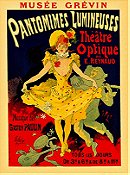
 55
55
 6.1
6.1
 6.5
6.5

